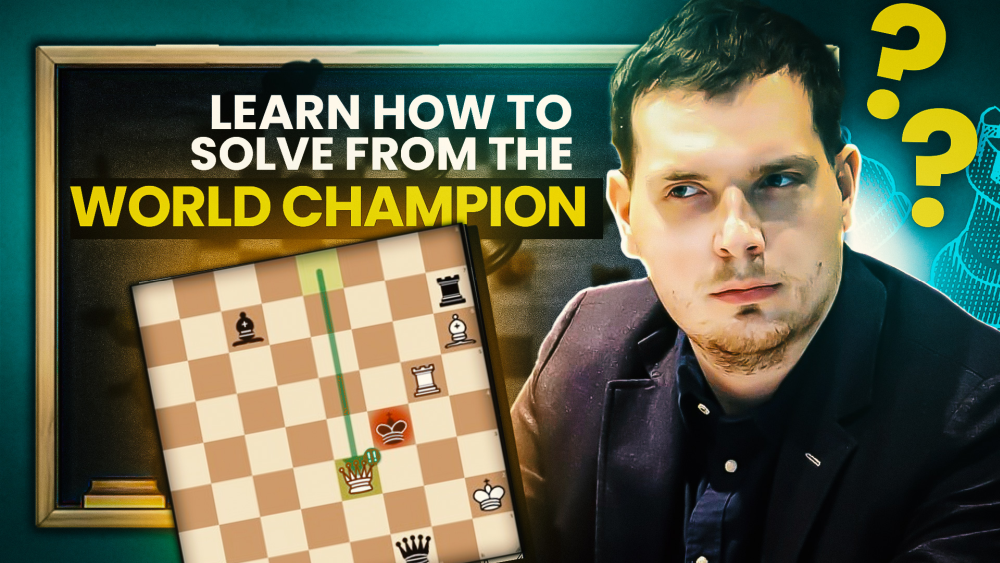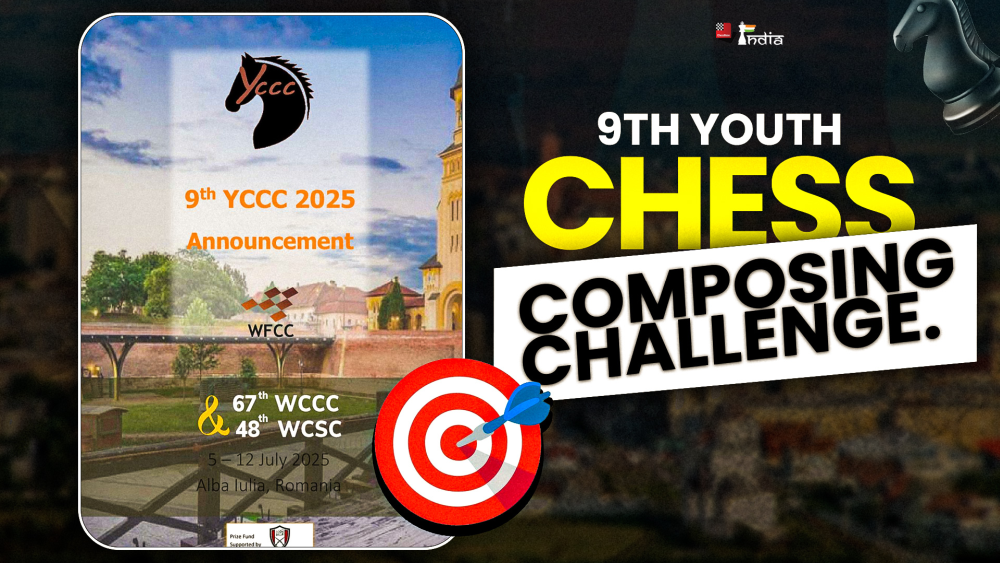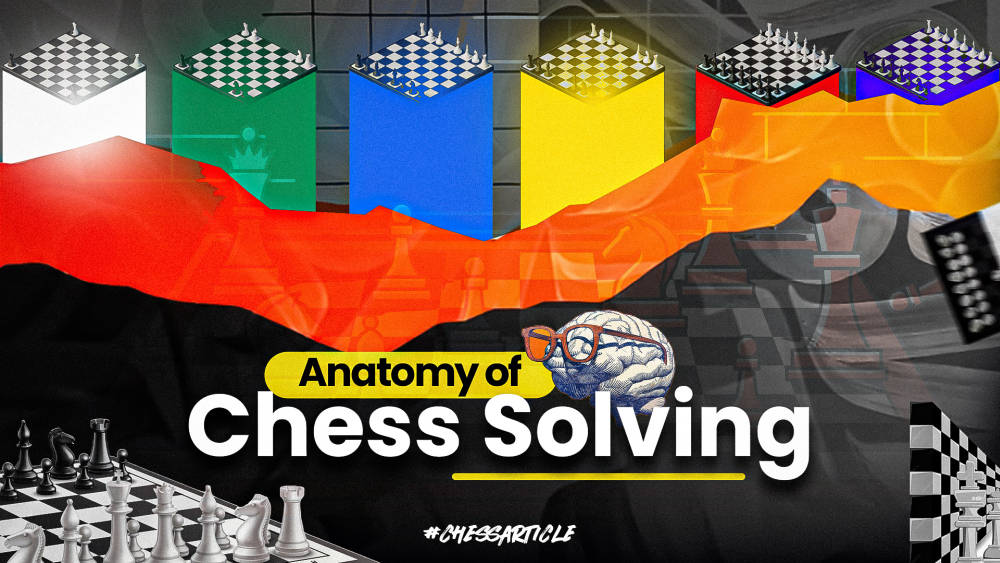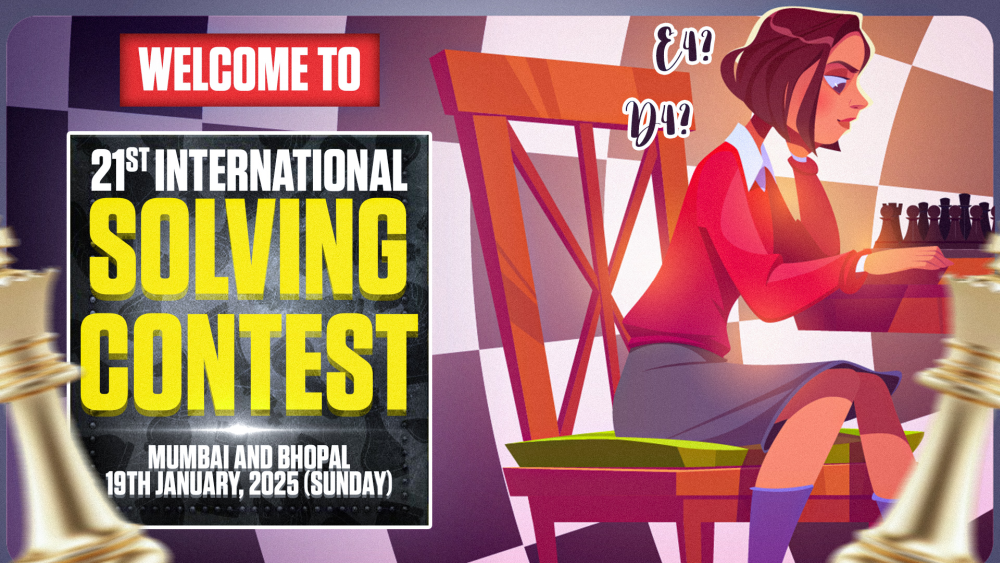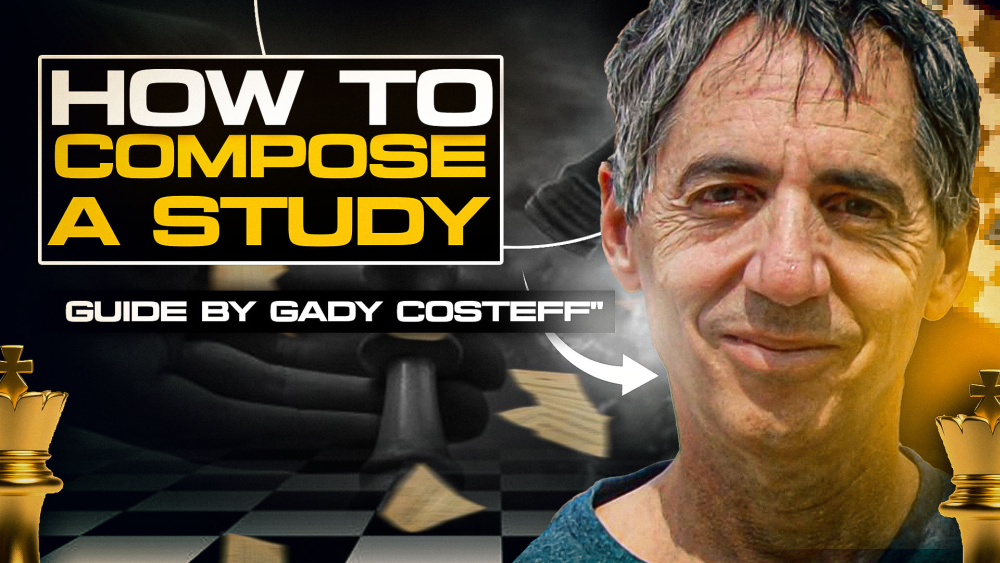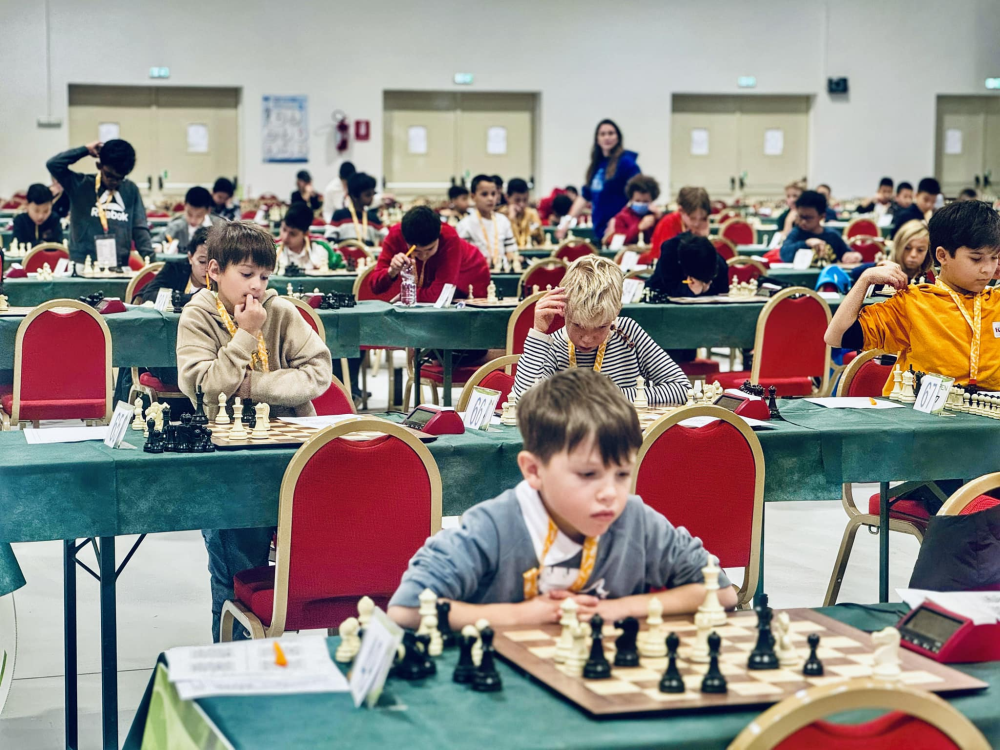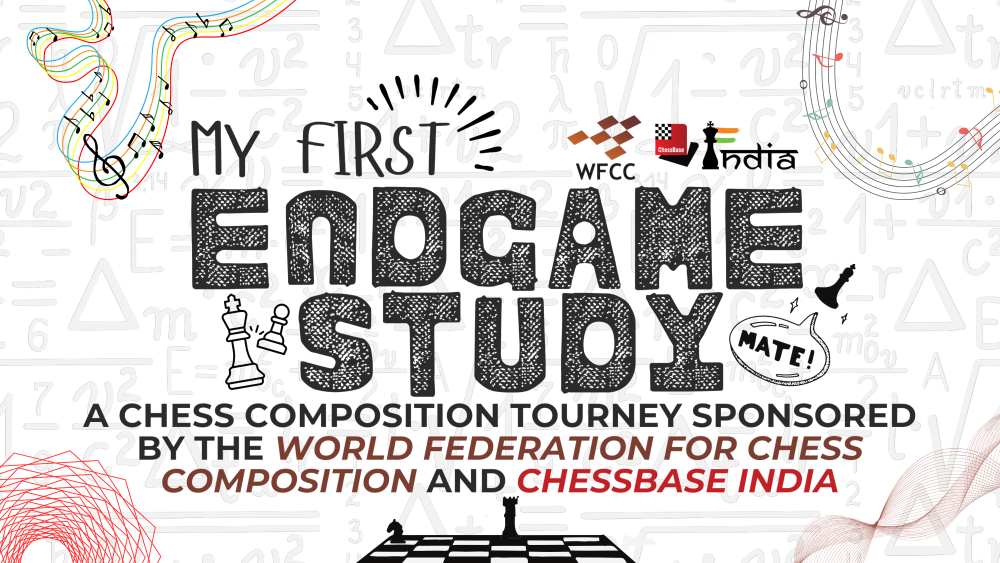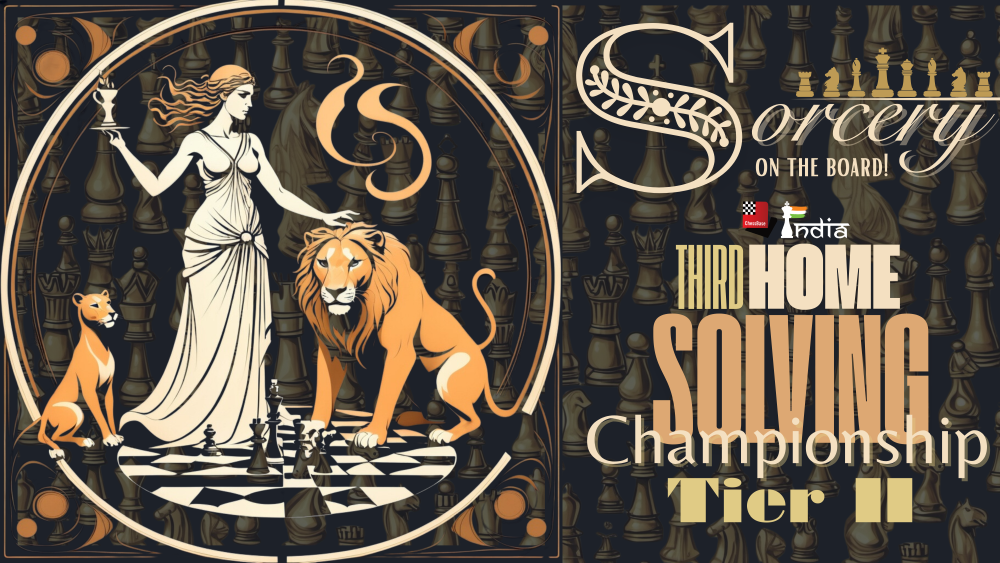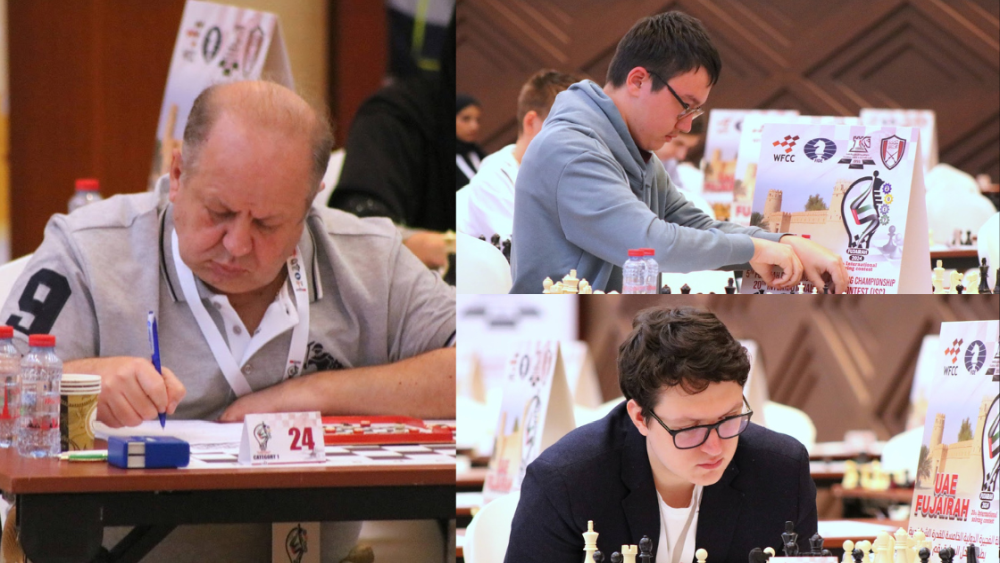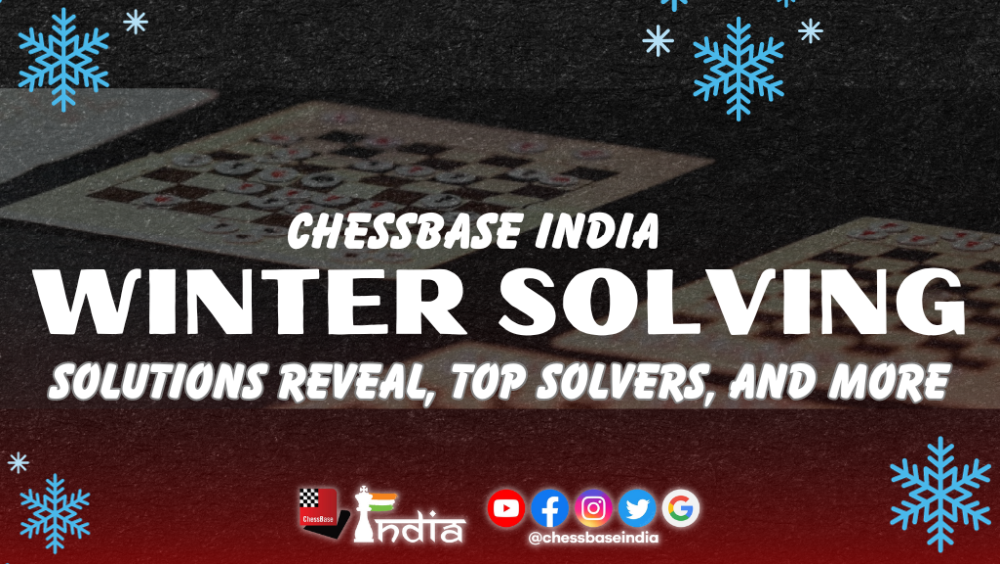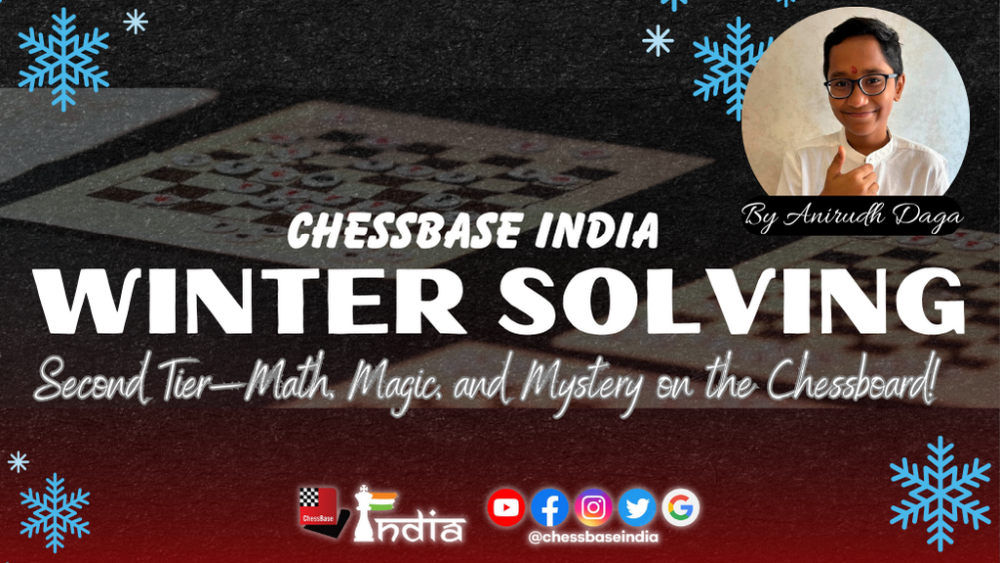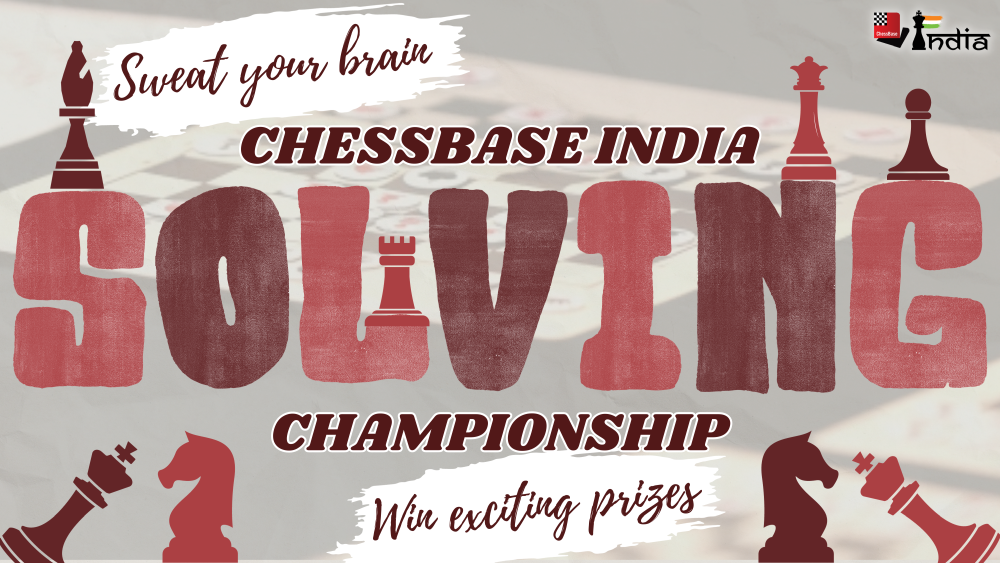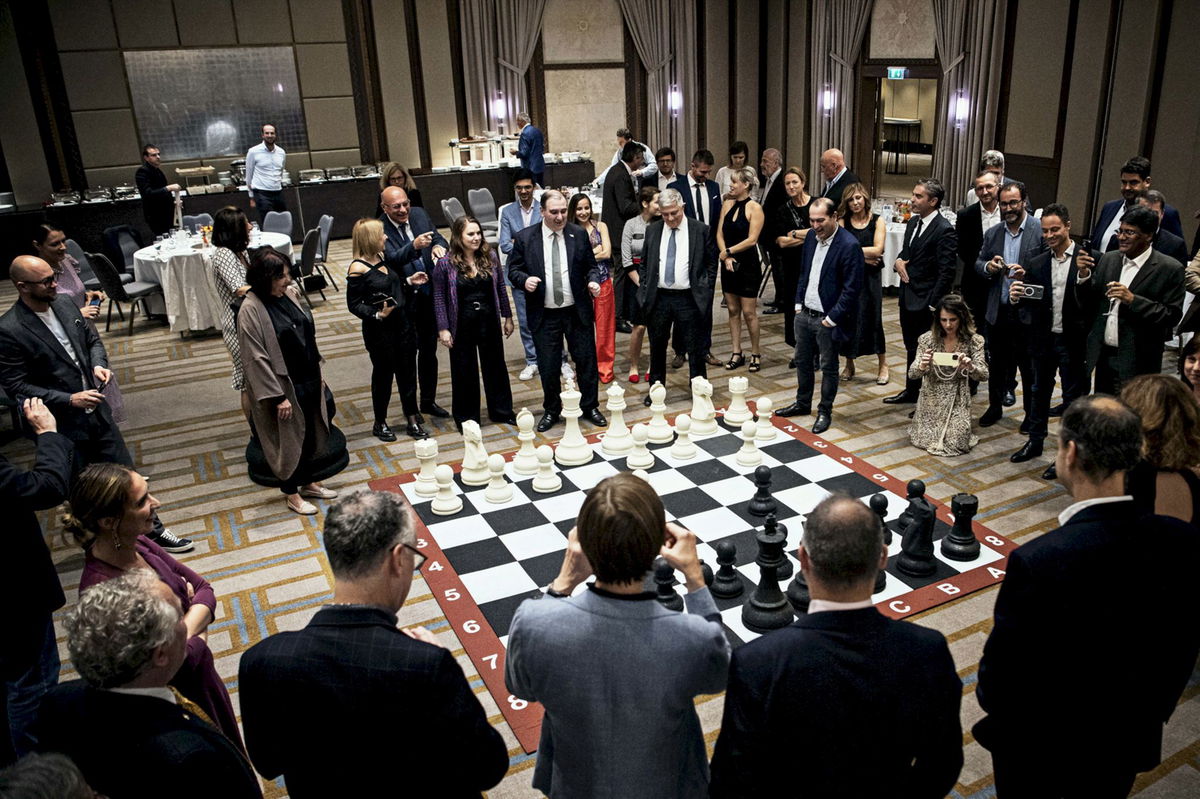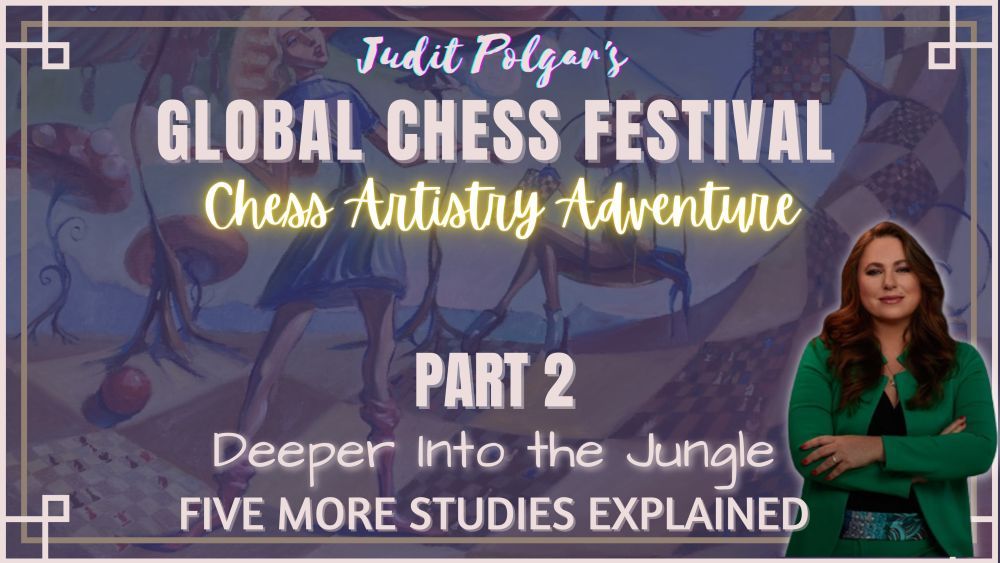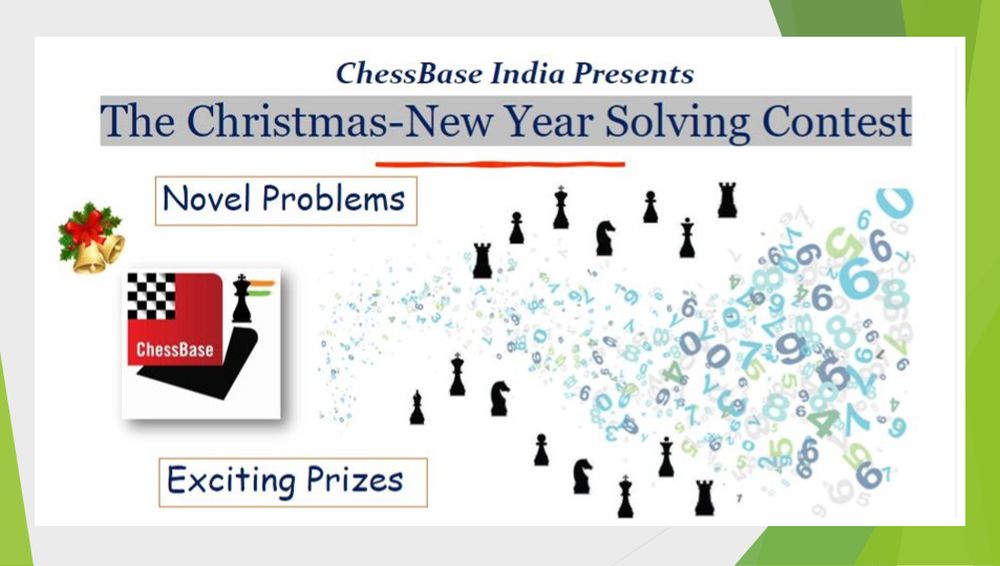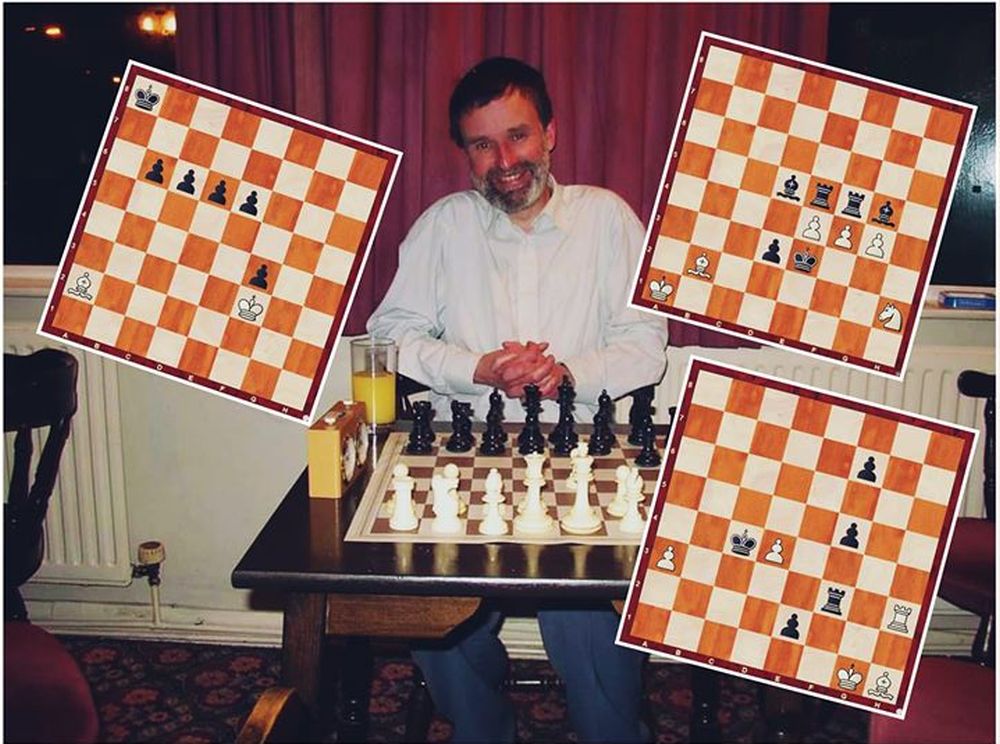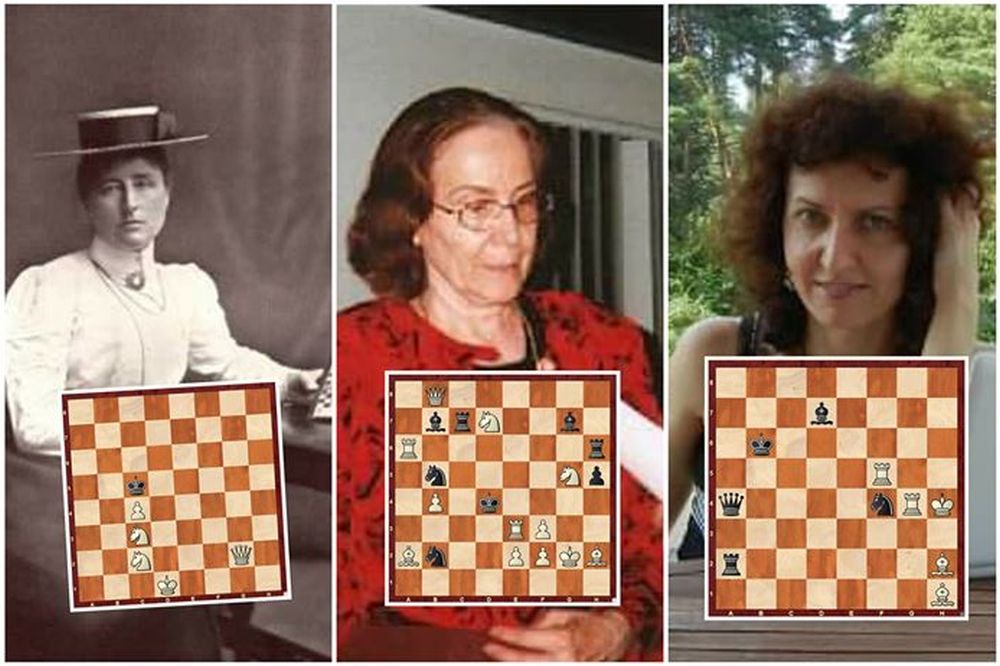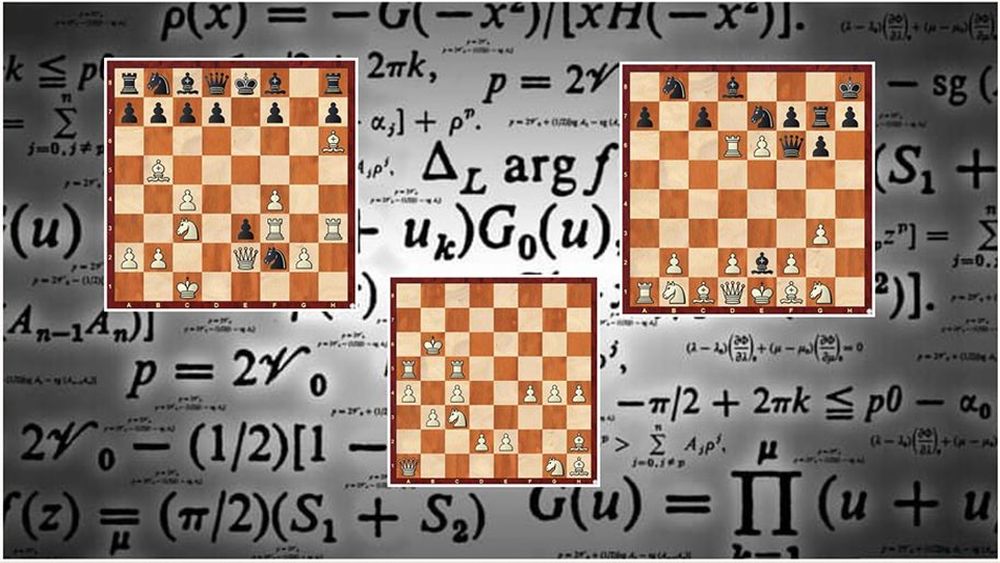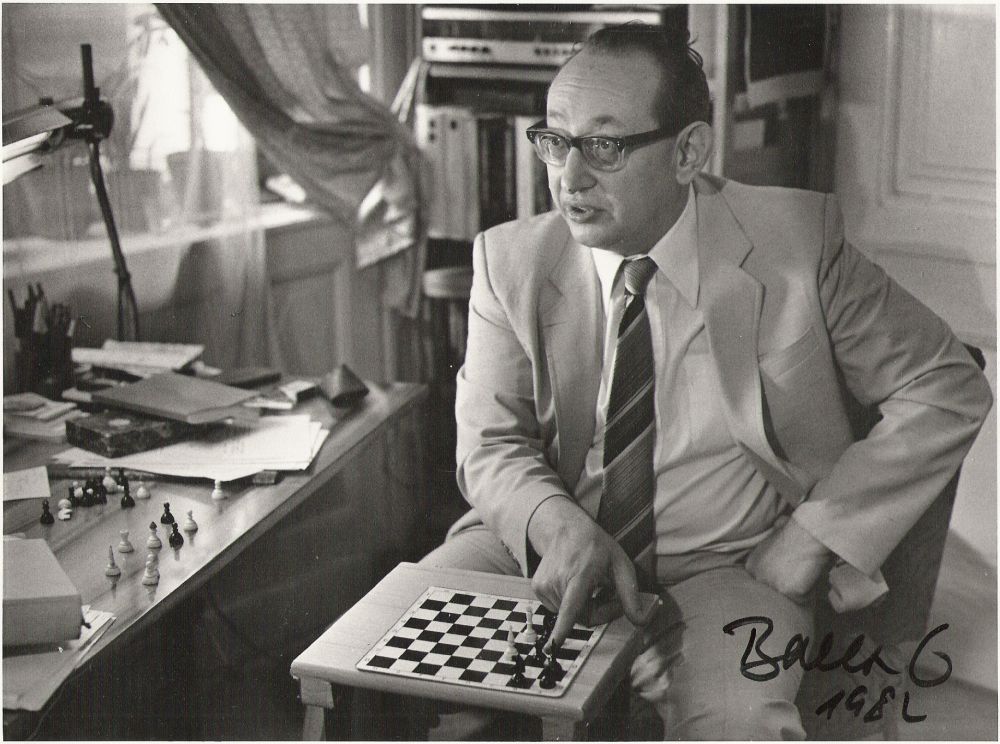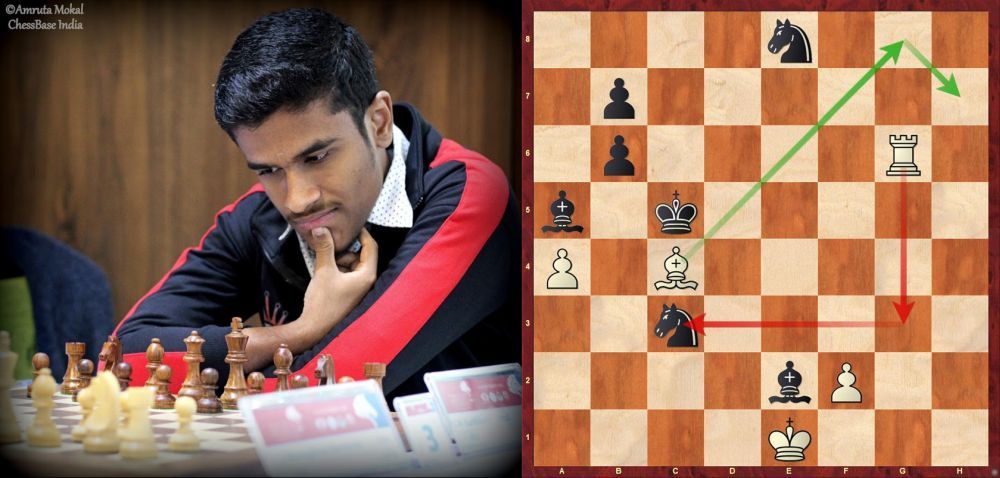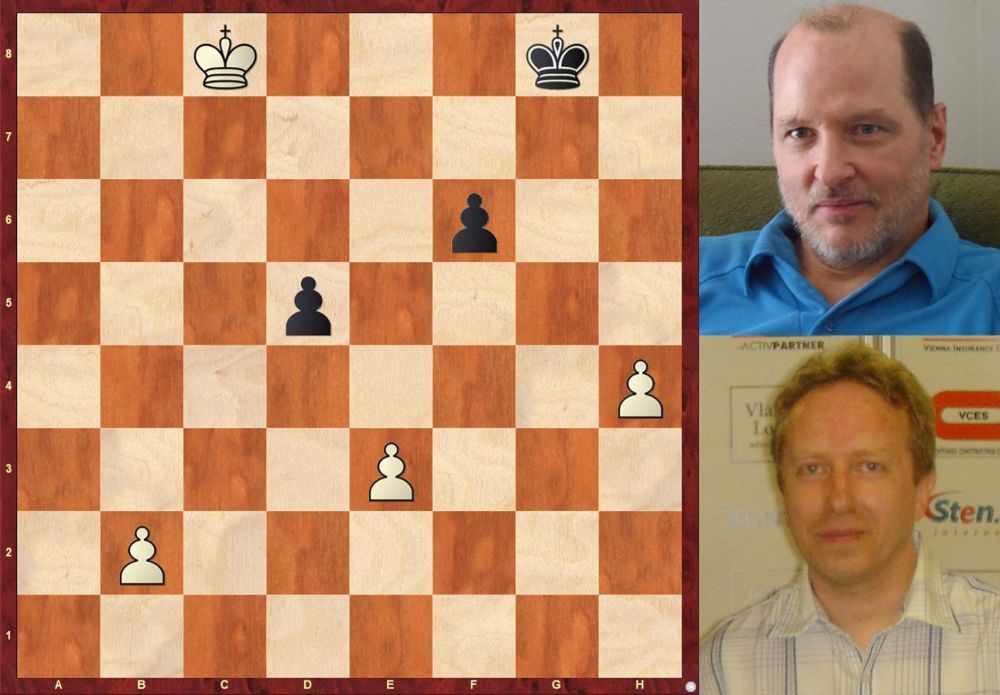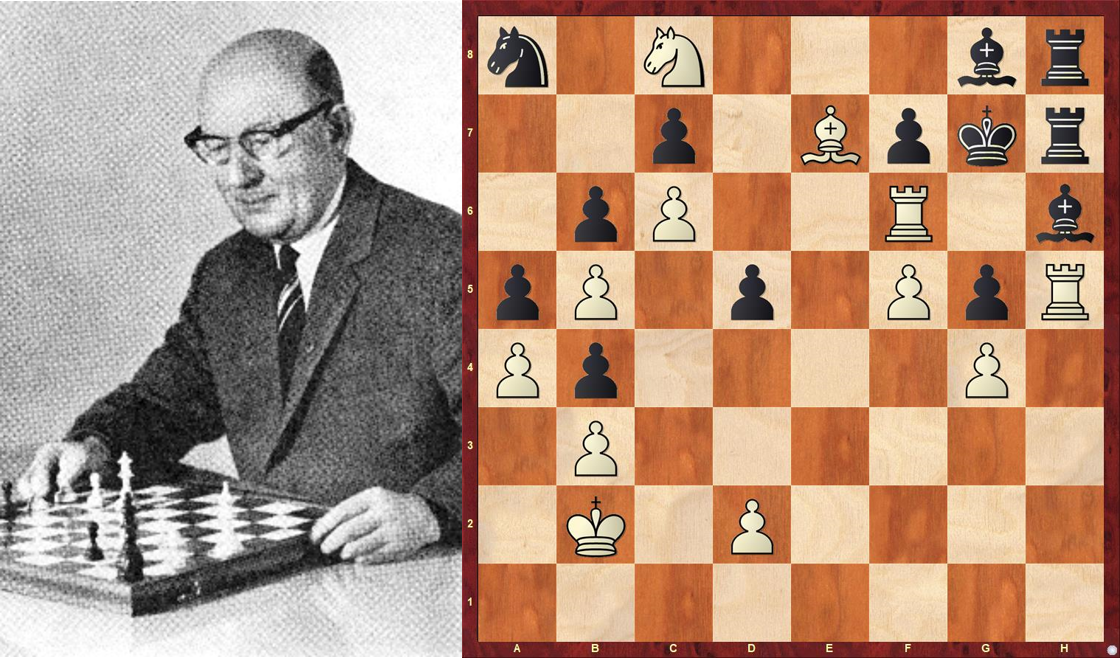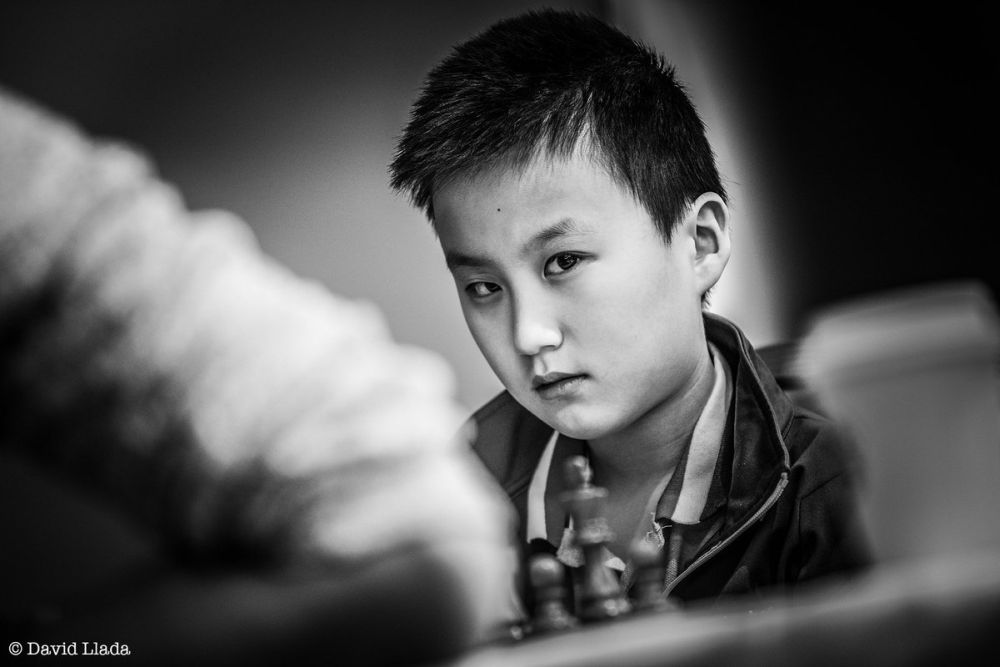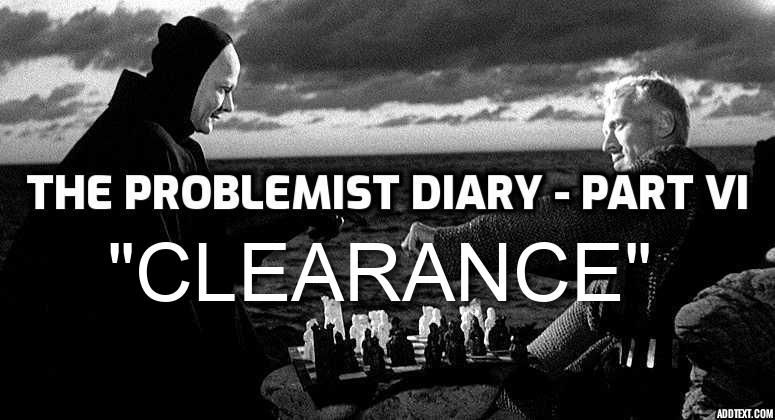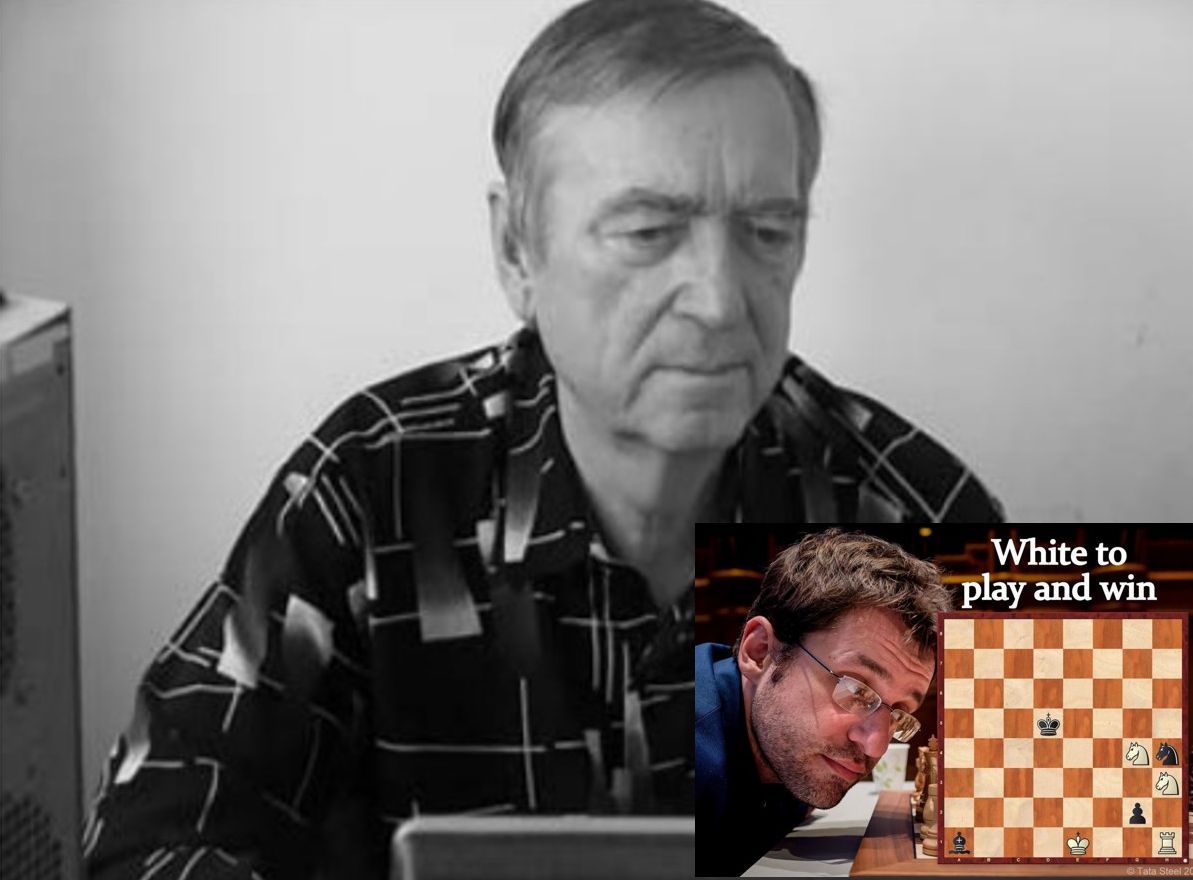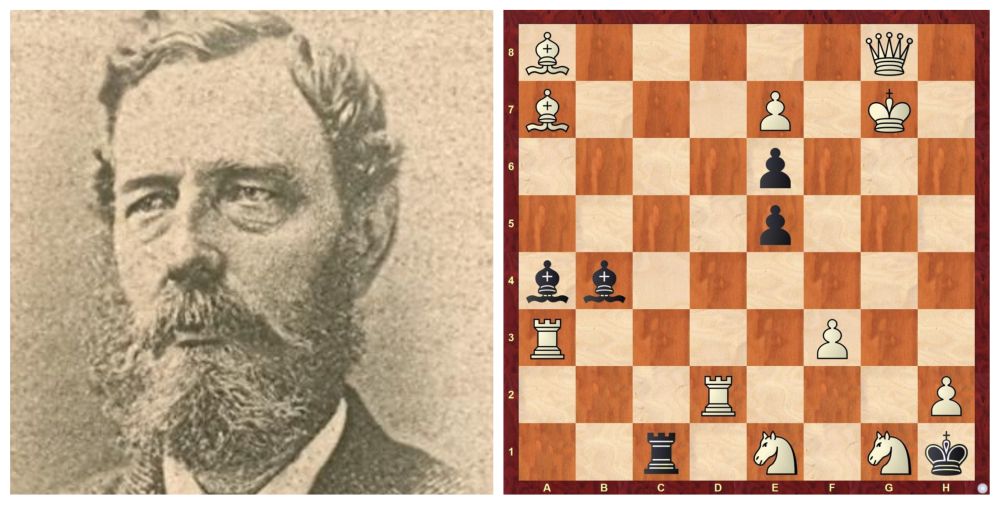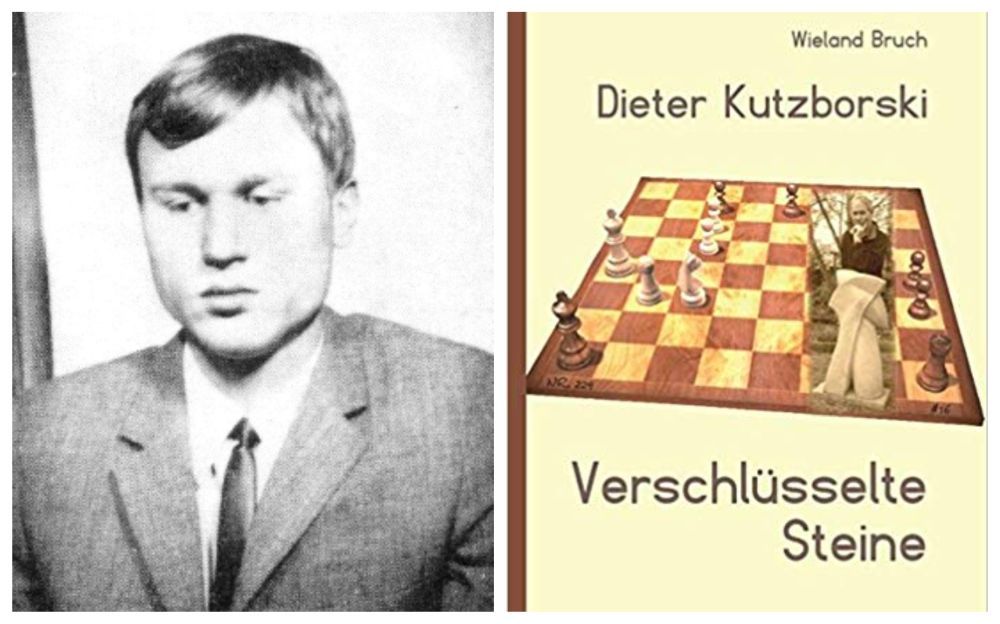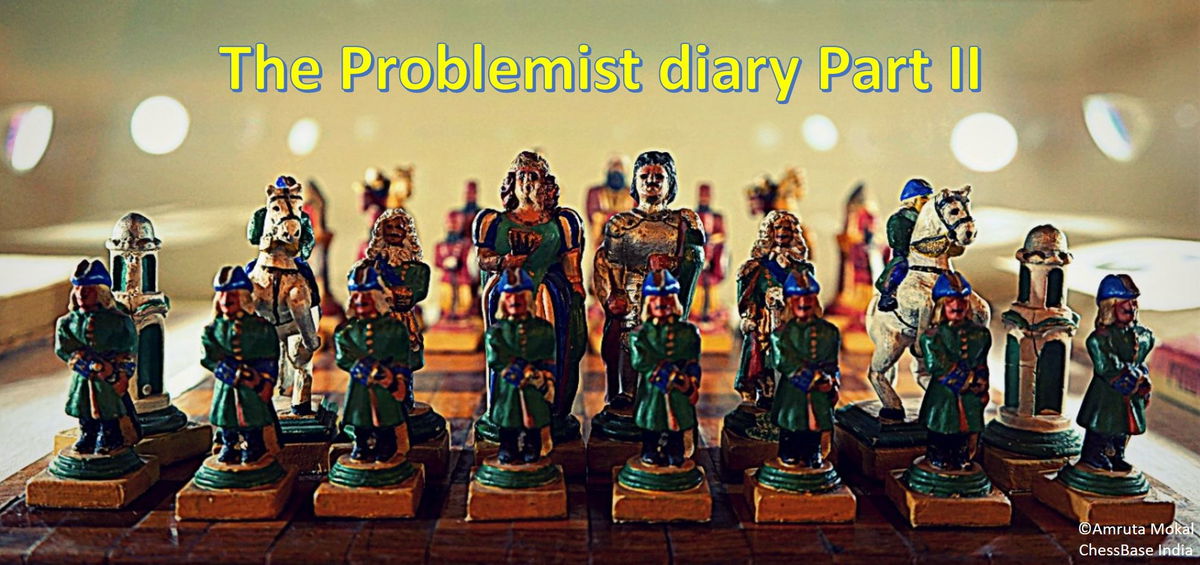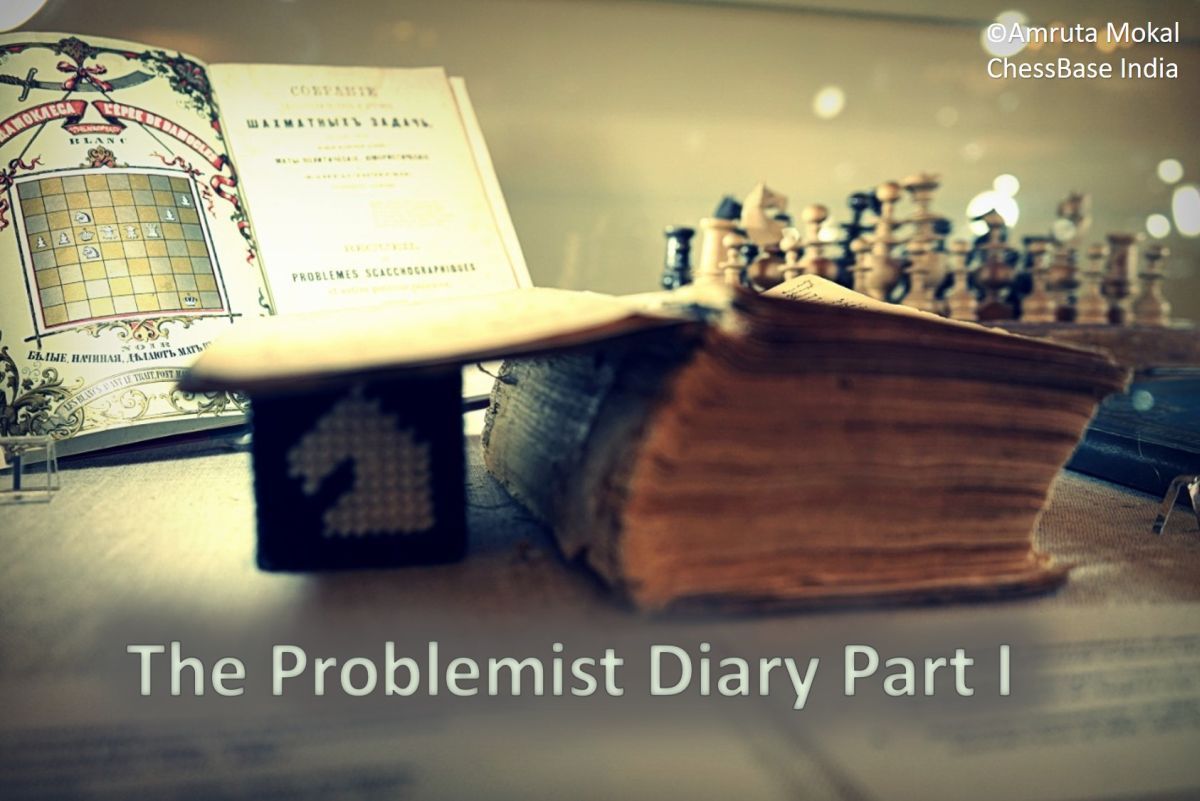Underpromotions, Play on Same Squares, Game of Corners | Chess Artistry Adventure - Part III
In the third and final instalment of the Chess Artistry Adventure series, we bring you seven more studies, six of them originals, by world-class composers like Arpad Rusz, Amatzia Avni, Michael Pasman, and more. We also briefly discuss the composers and try to understand how they can turn positions from games into original compositions. Like in the previous article, we also have an assortment of flavours here. Some of the studies are concrete and tactical, while others are a bit on the technical side. However, regardless of style, each composition is deeply instructional, and you can be sure to come out wiser as a chess player if you go through them all.
An Original Study by the newly minted winner of the FIDE World Cup, 2022
In the previous two parts of this series, we presented the works of Denmark's Steffen Slumstrup Nielsen, who has recently become the World Champion of study composition following the declaration of the results of WCCI 2019-21. On the 5th of October, the final results of another event of comparable world significance were declared, namely the FIDE World Cup in composing 2022. The winner, this year, in the studies section of the super-strong event is Michael Pasman—perhaps surprisingly, an over-the-board International Master from Israel and a relative newcomer in the composing world, considering he published his first study only three years ago, in 2019. It is our honour to begin today's article with an original by none-other-than IM Pasman. This is inspired by the finish of a game between Jhon Alexander Morales and Alejandro Pardo from 2012. It features something that's rare in practical play: bishop underpromotion!
Study 01
Michael Pasman
Chess Artistry Adventure, Global Chess Festival, 2022
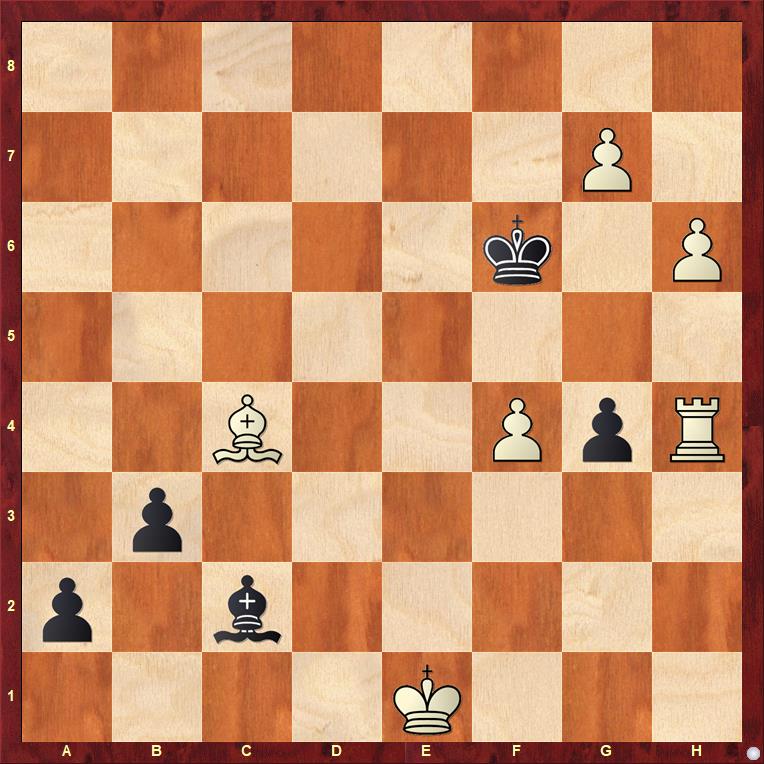
Solution: White has a pawn one square away from promotion but so does Black. Therefore, 1.g8=Q a1=Q+ 2.Kf2 Qd4+ leads nowhere. We must, therefore, start by gaining tempo on the black king, 1.g8=N+! Here 1...Kf5 2.Rh5+ Kxf4 3.Ra5 should be an easy win for White with the powerful passer on h6. Hence, the mainline follows 1...Kg6 2.Rxg4+ Kh7 3.Rg7+ Kh8 4.Ra7 a1=Q+ 5.Rxa1, 4...b2 instead of a1=Q+ isn't the most testing and is simply met with 5.Bxa2. But now 5...b2!

This is where the play gets sharp. First, 6.Rd1, the correct way to give up the rook. 6.Rb1 Bxb1 is only a draw. 6...Bxd1 7.Bd3 Bb3 and we reach the critical moment in the study.
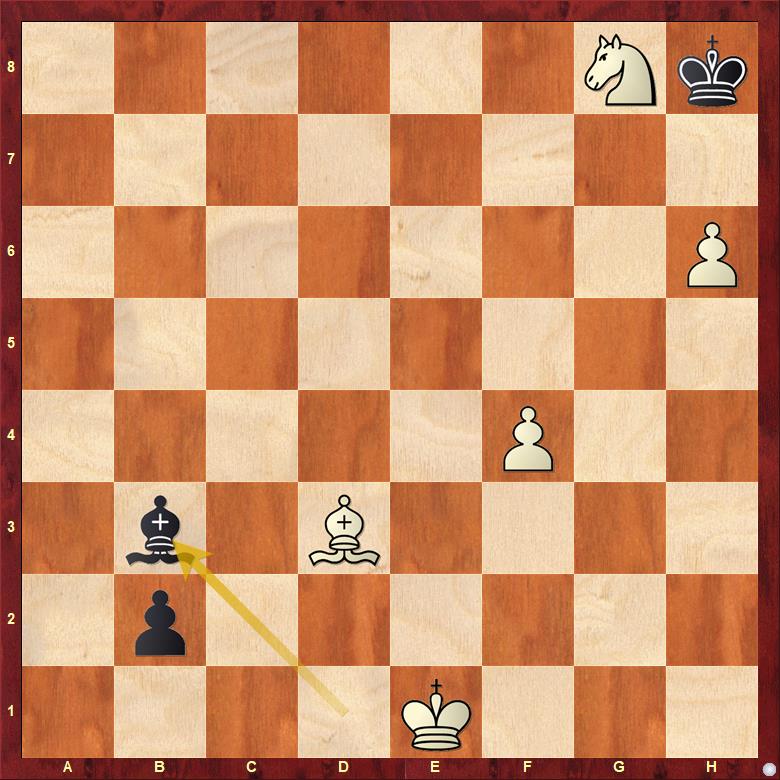
8.f5!! Ignoring the knight. The point is once the knight is taken, White will push f5-f6, and the passers on the sixth rank will be overwhelming. Here's a sample line if the knight is taken with the king: 8...Kxg8 9.f6 Ba2 10.Kd2 b1=Q 11.h7+ Kh8 12.Bxb1 Bxb1 13.f7 White wins. However, the mainline continues with 8...Bxg8 9.f6 Bh7! 10.f7 Bg8! 11.f8=B!!
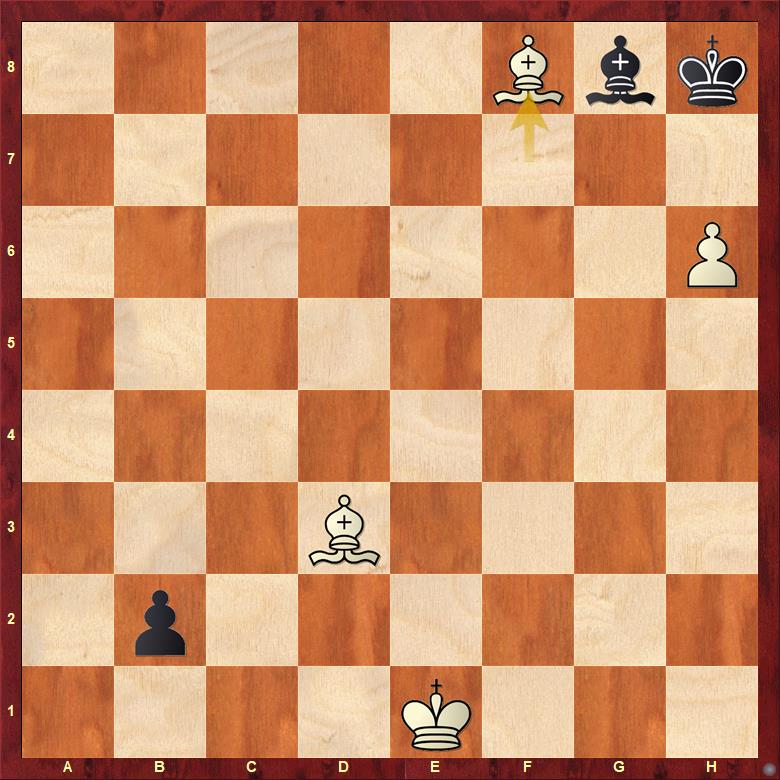
10...Bg8! was Black's final trap. 11.fxg8=Q+ Kxg8 is obviously a draw because White's bishop is of the wrong colour. And 11.f8=Q/R ends in a stalemate after 11...b1=Q 12.Bxb1. Hence, underpromoting the pawn to a bishop is the only way to secure win. Finally, 11...Ba2 12.Bg7+ Kg8 13.Bxb2 winds it all up. A piquant creation that starts with a knight promotion on g8, which is also a home square for black knights, and ends in a bishop promotion on f8, the home square for Black's light-squared bishop!
More About the Composer
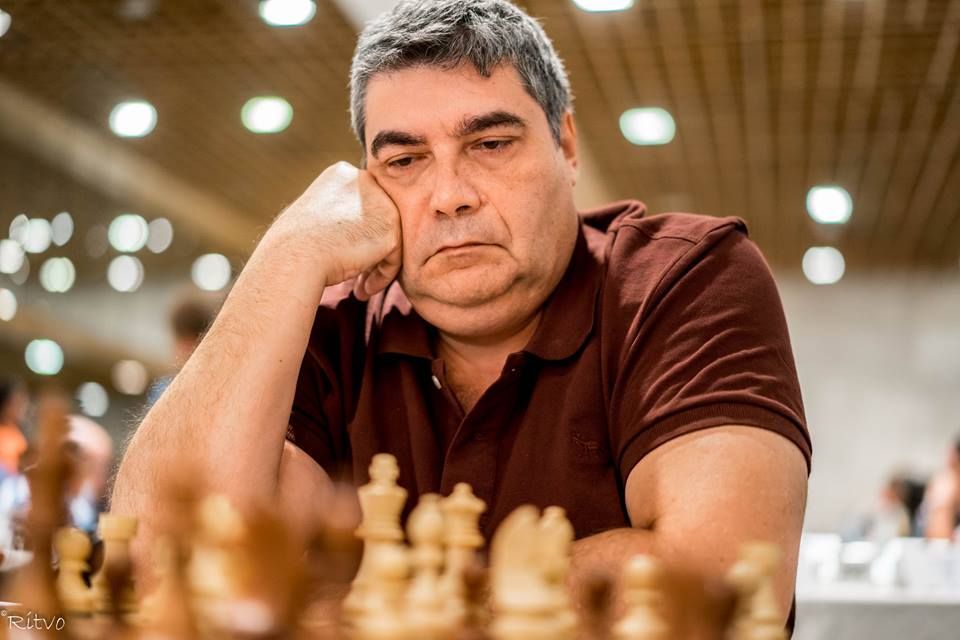
Michael Pasman is quite well-known on Facebook for his group ChessPM Puzzles and Studies, which he has been running for the last two years. He also has a rich chess website (created over ten years ago!), where among other things, you can solve studies and mate problems interactively. Even though Pasman has started composing only recently, he is no novice to world of studies and has been solving them for many years, almost from the time he started playing chess. He was first introduced to the game at the age of 12 back in 1972, in Riga, Latvia. However, since 1973, he has lived in Israel and continued playing at the Eliahu Levant's club in Be'er-Sheva.
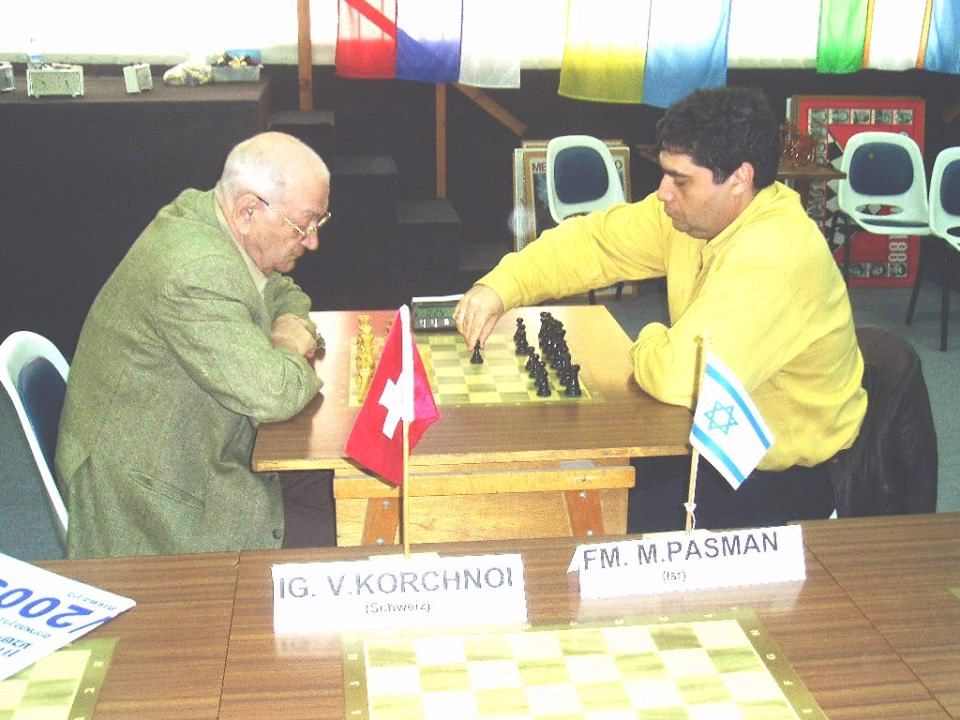
From 1983 onwards, Pasman participated in tournaments sparingly. That's mainly why he received his over-the-board IM title late in life, in 2005, at 45. Lately though he has been a regular at the Israeli Chess League and plays around ten tournament games per year. His other notable results in composing, apart from the World Cup gold this year, includes a first prize at the prestigious Timman-70 JT and several first prizes in tourneys organized by the Argentinian chess composition society, Uninon Argentina de Problemaistas de Ajedres (UAPA).
Next up is a composition by another chess player turned composer: Jan Sprenger. Interestingly, Sprenger won the bronze at the FIDE World Cup this year, behind only Michael Pasman and Oleg Pervakov, and ahead of veterans like Didukh, Avni, Becker, and even his mentor, Martin Minski, who came fourth. A detailed interview cum article on him was published recently on Siegfried Hornecker's long-running ChessBase column, Study of the Month.
Study 02
Jan Sprenger
Global Chess Festival, Chess Artistry Adventure, 2022
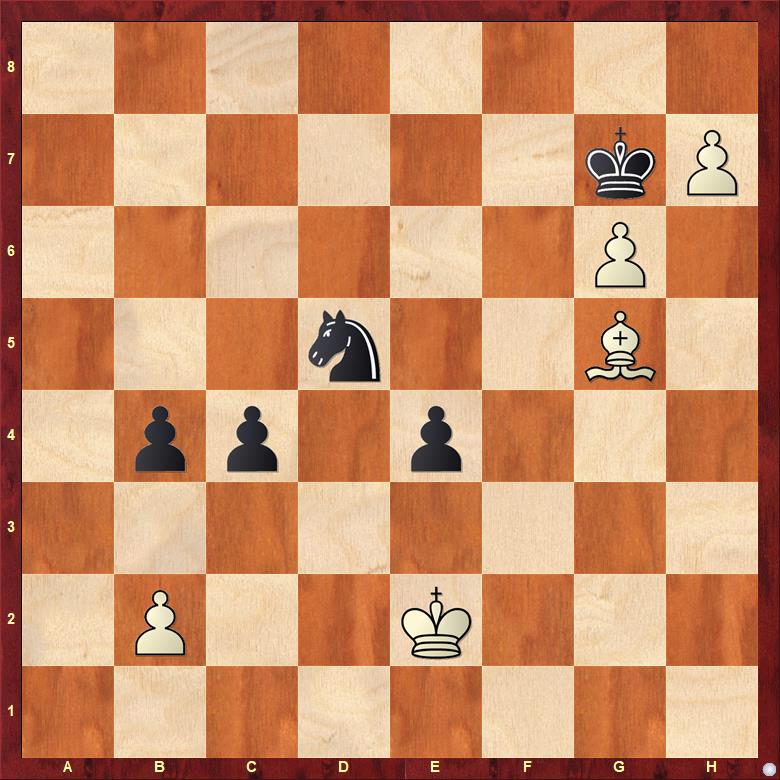
Solution: What stands out in this position immediately is the sad state of Black's knight. It is tied down to the defense of f6. Therefore, White will have to find a way to set up a zugzwang and force the knight away from d5. 1.b3! 1.Kd2 or 1.Kd1 both allow Black to go 1...b3, neutralizing White's advantage. And 1.Bh6+ Kh8 2.b3 Ne7 lets the d5 knight off the leash far too soon. 1...c3 2.Ke1! the right square for the king 2.Kd1 e3 is a mutual zugzwang but in Black's favour, 3.Bh4 e2+ 4.Ke1 c2 5.Bg5 Ne7 6.Bf6+ Kxg6 draws. 2...e3 and only now 3.Kd1 leads to the right zugzwang 3...Kh8 4.Bh4 with idea of Bg3-Be5 next 4...e2+ 5.Ke1! not 5.Kxe2 because of Nf4+!
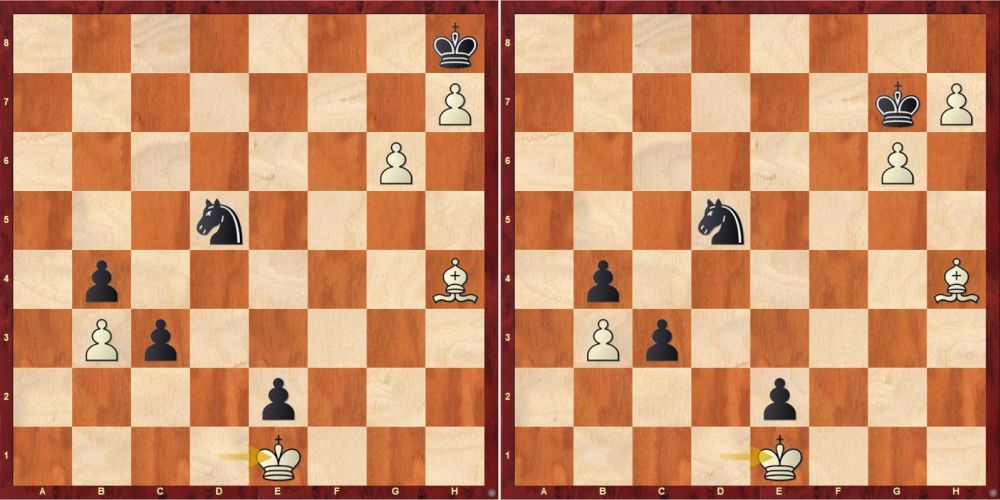
Now, 5...c2 runs into 6.Bg5 Ne7 7.Bf6# — thanks to the lost tempo, the black king is on h8 and not g7. And the mainline runs 5...Kg7 6.Bg5 c2 7.Kxe2 Ne7 the knight finally moves 8.Bf6+!!
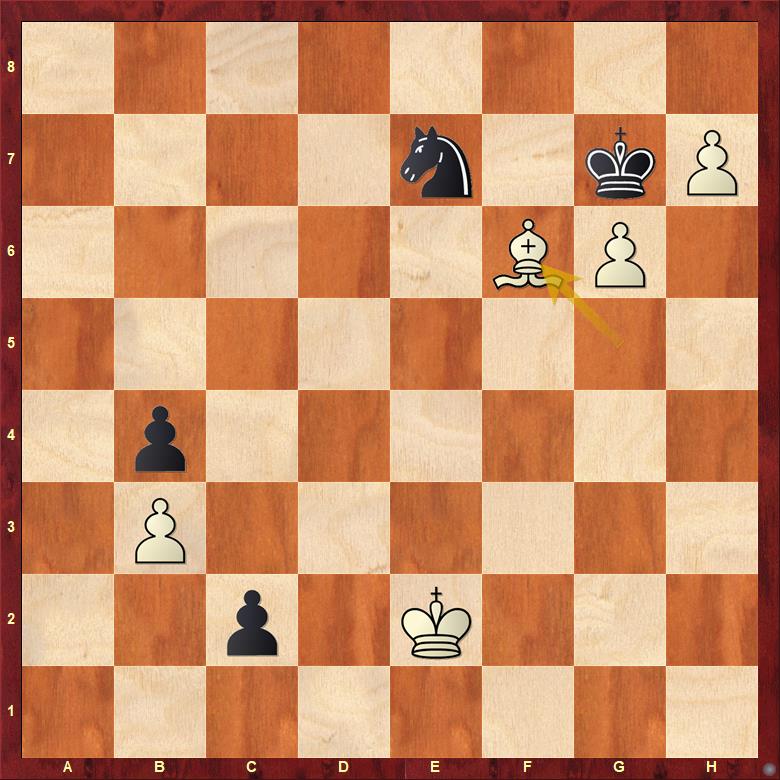
8...Kxg6 and here White must catch up with the c2 pawn first! 9.Kd2 Kxh7 10.Bxe7 wins! Although this study lacks spectacular moves but it has several instructive points valuable for practical players. Here what the composer himself had to say:
"The winning plan uses the classical tools of the bishop against the knight: zugzwang and king triangulation. I hope that the use of these techniques together with the required accuracy in implementing the winning plan will be useful for practical players. There is also an instructive thematic try 2. Kd1? and the position is also very natural. Ideally, this could be something for a high-level endgame book."
Firouzja - Nakamura, FIDE Candidates 2020
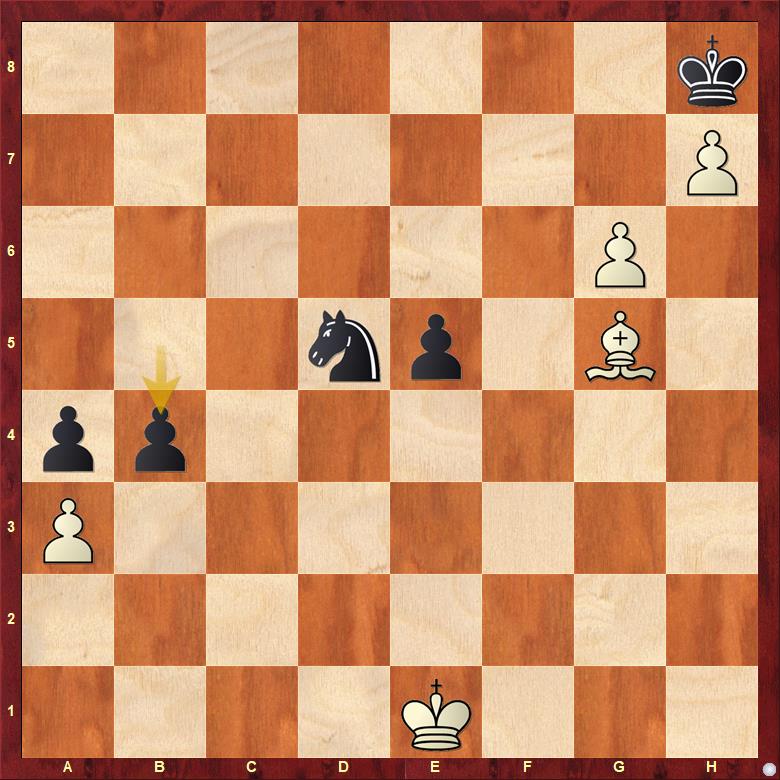
The idea of this study is based on an ending played not so long ago between Alireza Firouzja and Hikaru Nakamura at the Candidates earlier this year. In the game, Hikaru was in a lot of trouble with his knight stuck on d5, but he managed to escape by the skin of his teeth with some phenomenal defensive play. The American was spot on when he played 46...b4!! above - the only move to keep the evaluation bar even in the position.
Player, Problemist, Philosopher!!
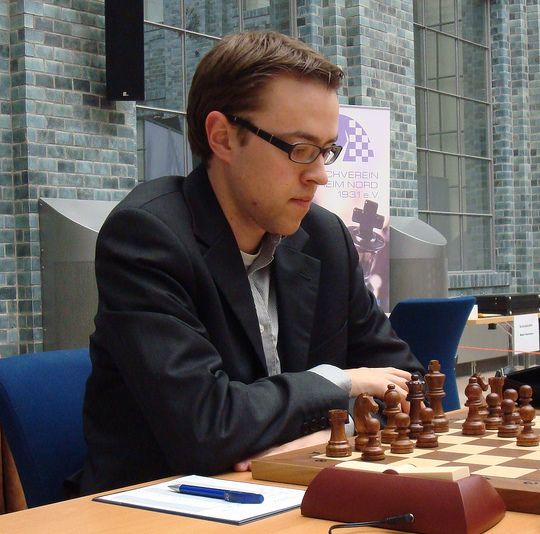
In over-the-board chess, Jan Sprenger became an International Master in 2001 and a Grandmaster in 2018. By profession, he is an academic and has a doctorate in philosophy. Although his academic research focuses on the epistemology of science, he writes on his website that he is also avidly interested in the psychology and phenomenology of playing chess. Phenomenology refers to the philosophy of experience and consciousness. It was pioneered by Edmund Husserl and later developed by such greats as Martin Heidegger, Maurice Merleau-Ponty and Jean-Paul Sartre. When we asked Jan how phenomenology relates to chess, he replied the following: "I am interested in the psychological processes that happen during a chess game. A tournament game can get very tense and it is easy to be carried away by emotions (which usually leads to bad moves). It is a unique feature of chess that you have to fight the real opponent and the opponent in yourself at the same time. The cognitive rewards of a great game and the pain you feel when losing a game where you had a good position are also fascinating things."
Studies often feature endgame positions. Hence, they are sometimes more descriptively called "Endgame Studies." However, as we have seen in this very series, studies can frequently be heavy with pieces. In fact, given the vastness of present-day chess knowledge, the odds of finding something original with five, seven or ten units are much lower than, say, with fifteen. However, there are still composers who stick to a minimalistic style and create with great novelty. The work we discuss next is by one such maven. It uses—would you believe?—no more than four pieces and a pawn.
Study 03
Árpád Rusz
Chess Artistry Adventure, Global Chess Festival, 2022
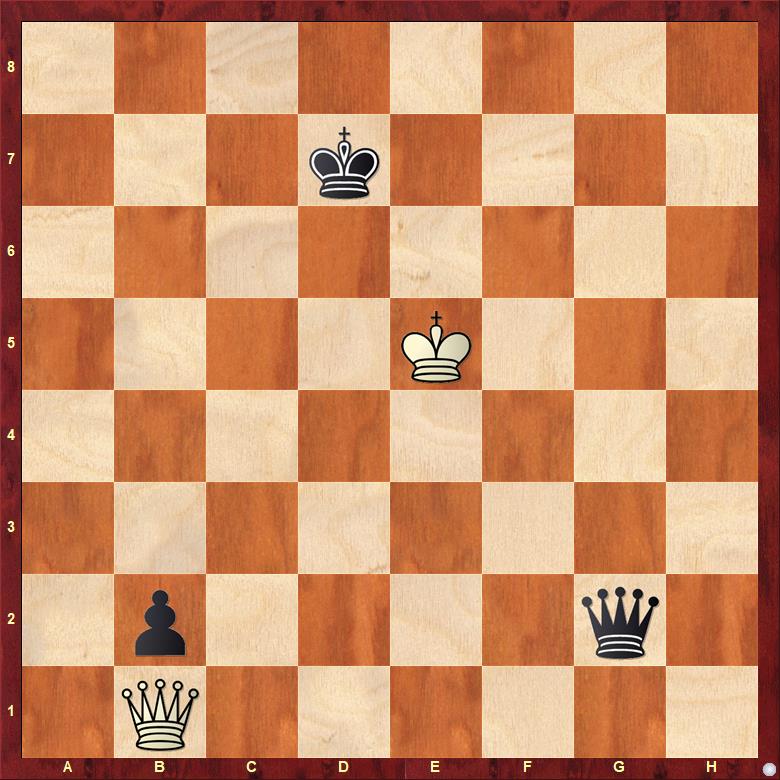
Solution: Despite being blocked, the b2 pawn is potentially dangerous. If Black manages to bring his queen to c1 and get his king to safety, White will be doomed. Therefore, White must act at once and try to force a perpetual. Now, 1.Qd3+ fails interestingly due to 1...Ke8 2.Qb5+ Kf8 3.Qb4+ Kg8 4.Qc4+ Kg7 5.Qc7+ Kh6 6.Qb6+ Qg6—here 7.Qe3+ loses to Qg5+ and 7.Qxb2 to 7...Qg7+, a skewer! Hence, 1.Qf5+! is the key. Next, the black king is chased all the way to b1: 1...Kc6 2.Qe6+ Kc5 3.Qd6+ Kc4 4.Qd4+ Kb3 5.Qd3+ Ka2 6.Qc4+ Kb1
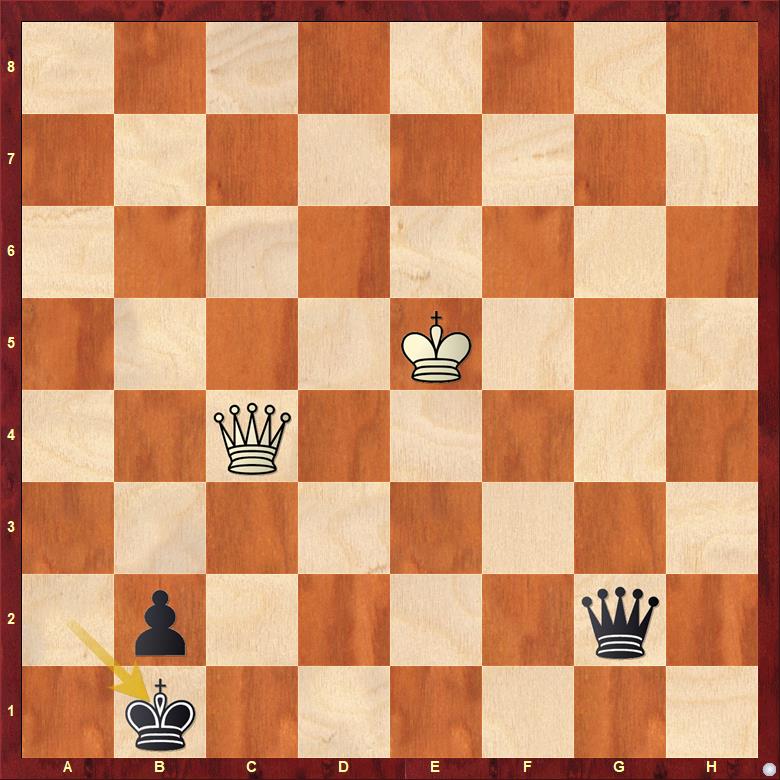
Another check here is a mistake, White then ends up being forced to exchange queens. Here's a sample: 7.Qd3+ Kc1 8.Qc4+ Kd1 9.Qd3+ Qd2 10.Qb1+ Ke2 (10.Qf1+ Qe1+) 11.Qe4+ Qe3. The king on e5 proves to be unfortunately placed. The correct move, therefore, is 7.Kf6!!—astonishingly the only move that keeps the game even. 7...Qf2+ 8.Kg7 Qa7+ and now 9.Kh8!!—again, the only move that draws.
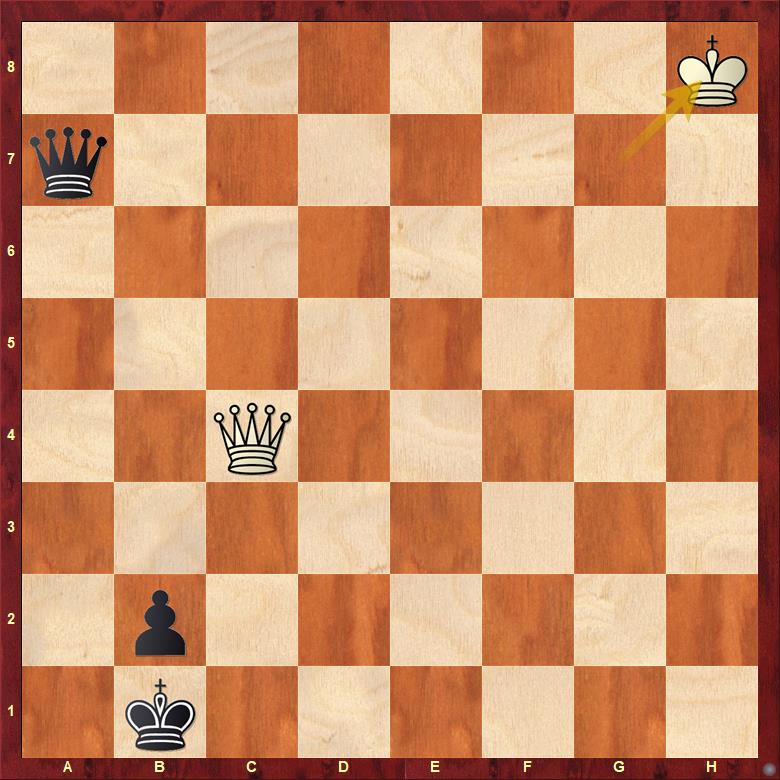
9.Kg8 simply loses to 9...Qa2
9.Kg6 runs into 9...Ka1 10.Qc3 Qa6+ (controls c4 and also explains why king on the sixth rank doesn't work) 11.Kg7 Ka2 - no Qc4+ to counter!
Finally, 9.Kf8 is met with 9...Ka1 10.Qc3 Qa6 11.Qd4 Ka2 12.Qd5+ Ka3 13.Qc5+ Kb3 14.Qd5+ Qc4 15.Qb7+ and now 15...Qb4 comes with check, forcing queen exchange—yes, you do need the king on h8! This is machine-like accuracy!
9.Kh8!! Ka1 10.Qc3 Ka2 11.Qc4+ Ka1 12.Qc3 Qa6 13.Qd4 Ka2 14.Qd5+ Ka1 15.Qd4 Black can't breakthrough! This study provides a valuable lesson in endgame technique and, in fact, is based on an old game between Janowski and Marshall.
More About Árpád Rusz


Árpád Rusz is a Romanian chess player and study composer. He is also a computer programmer and, to quote the chess programming wiki," has contributed along with Guy Haworth on Position Criticality in Chess Endgames at the Advances in Computer Games 13 conference in Tilburg, demonstrating the implementation of their algorithm to help analyze uniqueness in endgame positions objectively with a chess variant called Starchess, invented by László Polgár in 2002, which has a star-shaped board of 37 hexagons." Following the declaration of the results of WCCI 2019-21, Rusz has fulfilled the conditions for the IM title in composing.
We have had a philosopher among the composers we have met so far. A close relative to philosophy is psychology, and the following is a composition by a psychologist. After the somewhat technical endgames, this should come as a refreshing change.
Study 04
Amatzia Avni
Chess Artistry Adventure, Global Chess Festival, 2022

Solution: White is down three pawns. However, the weak dark squares around the black king, and the firmly established bishop on d6, give him a powerful counterattack. 1.Rh3!! the rook must be sacrificed right away to pave way for the queen. 1...Rxh3 2.Qg5 Bf8. 2...Qh4 3.Qxg7 Qh8 4.Qg5 (or Qg2) 4...f6 5.Qg6+ is a straightforward draw; 2...Bf8 is therefore the better way to defend e7. 3.Qg8 Rh8 4.Qxh8, the threats keep coming. 4...Qg1+ 5.Kh2 Qg7 defends f8, but 6.Qh1! - White switches attack to the other side. But now 6...Bxd6 7.exd6 f5 and Black makes room for his king, how does White keep the momentum going?
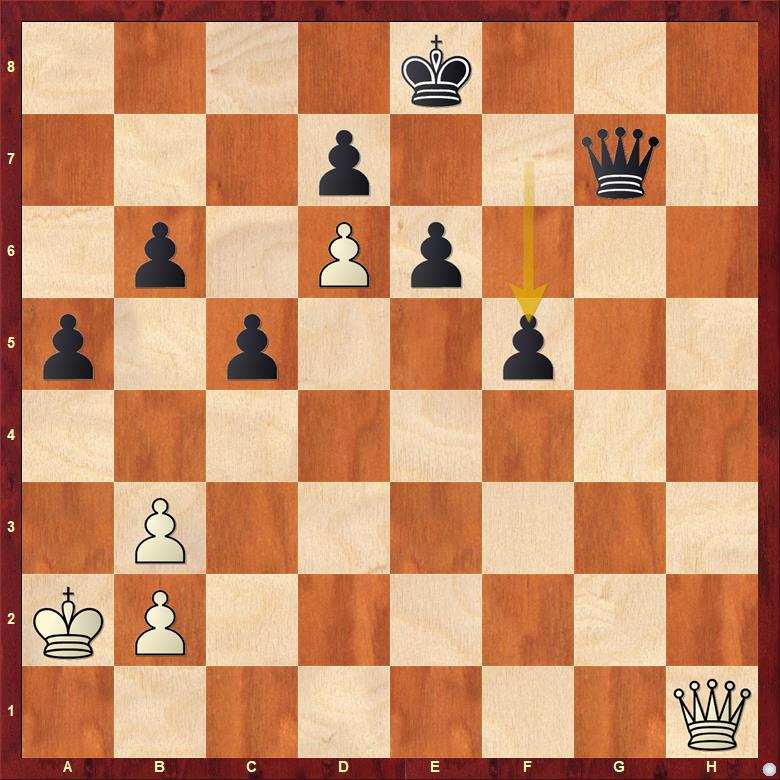
8.Qa8+ immediately is premature due to 8...Kf7 9.Qd8 Kg6, etc. The more restraint 8.Qb7! - threatening Qc8+ - is the correct move. Next, 8...Qf6 9.Qa8+ Qd8 10.Qh1 Qf6 11.Qa8+ and the moves repeat. 10...Qg5 is not possible in view of 11.Qh8+ Kf7 12.Qc8, which is losing for Black. An exhilarating game of corners!
Amatzia Avni composed this study inspired by one of his own games from more than 44 years ago. We requested for his insights about this study in particular and studies composed based on games in general, and the following is what he wrote to us:
"Composing on the basis of a game means, to me, that I have to add significant content to what happened in the game. Just disposing of superfluous pieces is not enough. The first move of my study, paving the way for the WQ, and the corner-play at the end add to the ideas presented in the game; as the particular game was played by myself (many years ago), it can be said that in this instance, everything in this study is my own creation."

Amatzia Avni is a FIDE Master in over-the-board chess and has recently fulfilled the requirements for the International Master title in composing. He is a psychologist by training and has authored several popular chess books, some of them with a blend of psychology. In his book, The Grandmaster's Mind, for instance, he investigates how strong players find good ideas and pursues this goal by interviewing top players and analysts. The interviewees include famous grandmasters such as Boris Gelfand, Ilia Smirin and Lev Psakhis.
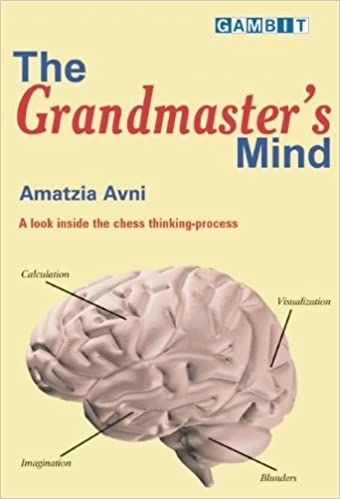
In another book, Practical Chess Psychology, he delves into the human factors involved in chess performance and offers practical advice on dealing with issues like lack of motivation, confidence and resolve to come back after a disappointing loss. A conversation between Jan Sprenger and Amatzia Avni, it seems, is really one to look forward to!
The subsequent two studies are inspired by the finish of a game between Valentina Gunina and Thang Trang Hoang from the Grand Swiss Tournament that took place in Riga last year. This time let's look at the inspiration first and then move on to the creations it inspired.
Valentina Gunina - Thang Trang Hoang, FIDE Grand Swiss, 2021
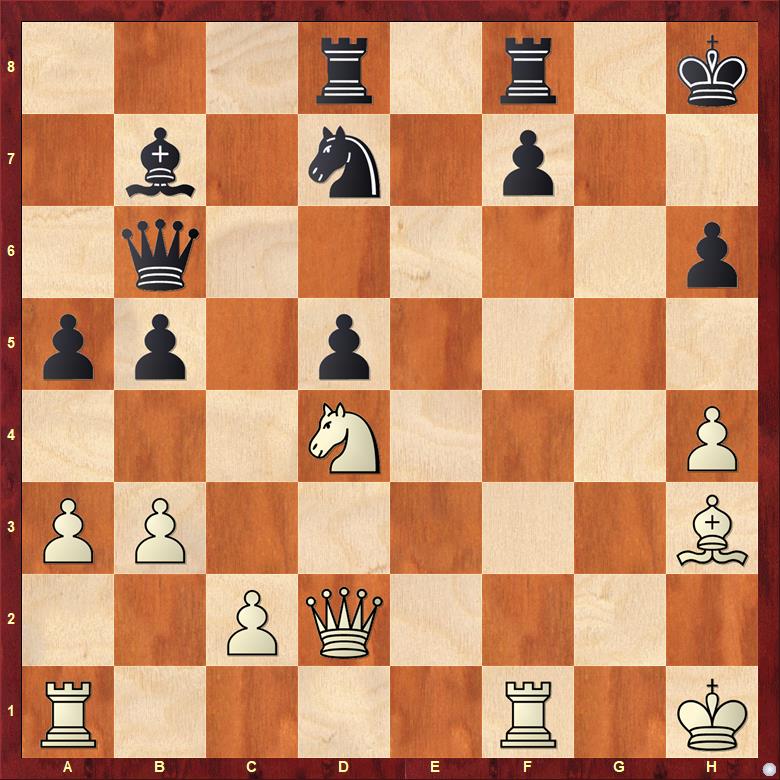
There is more than one way for White to win this position, but what is the best one? 1.Ne6 is tempting, but Black has 26...d4+ 27.Kh2 Qd6+, and the white king is in real pickle! In the game, Valentina found the perfect, what a problemist calls a "logical fore-plan," by sacrificing another piece on the same square. 26.Be6!! Kh7 27. Bf5+ Kh8 28. Ne6!! d4+ 29. Kh2 Qd6+, and now the king has a free square: 30. Kh3. Black resigned after two more moves.
Such sparkling back-to-back sacrifices are a perfect ingredient in a composer's recipe. No wonder it did inspire a pair of beautiful studies. One by Steffen Nielsen, a composer who has extensively covered on our channel, and the other by the teacher-student duo of Marjan Kovacevic and Ben Smolkin. Now let's go through them one by one.
Study 05
Steffen Slumstrup Nielsen
Chess Endgame Studies and Composition, 2021
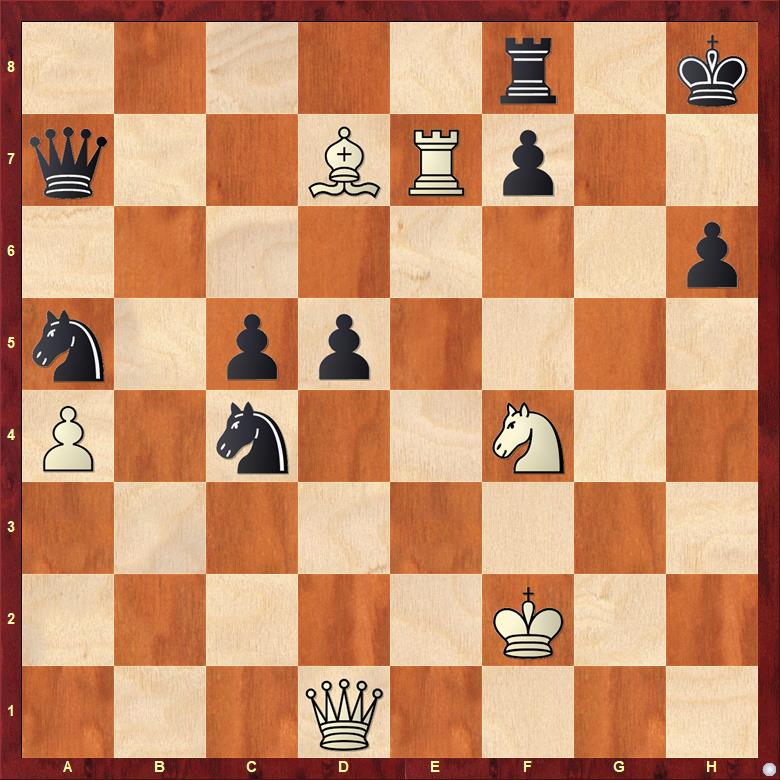
Solution: This is an amusing original based on the Gunina-Hoang game that Steffen made for the popular Facebook group Chess Endgame Studies and Compositions dedicated to problems and studies. 1.Qa1+! d4 2.Qh1! Qb6 and now we have our thematic move 3.Re6!! - shutting off the queen on the sixth rank with Qxh6+ followed by mate as the threat. 3...Qb2+ 4.Re2 Qb6. Obviously, h6 can't be left undefended, so the black queen must retreat, and b6 is the only place she can keep an eye on h6 from. This shows how 1.Qa1+ served as a crucial preparatory move. Without d4, that queen would've escaped to the kingside via the b2-g7 diagonal! 5.Be6!! Kh7 6.Bf5+ Kh8 7.Ne6!! (the only winning move) 7...fxe6 (not a check, thanks to the bishop on f5!) and finally, 8.Qxh6+ Kg8 9.Qh7#. Replay through the solution below:
Study 06
Marjan Kovacevic & Ben Smolkin
Chess Artistry Adventure, Global Chess Festival, 2022
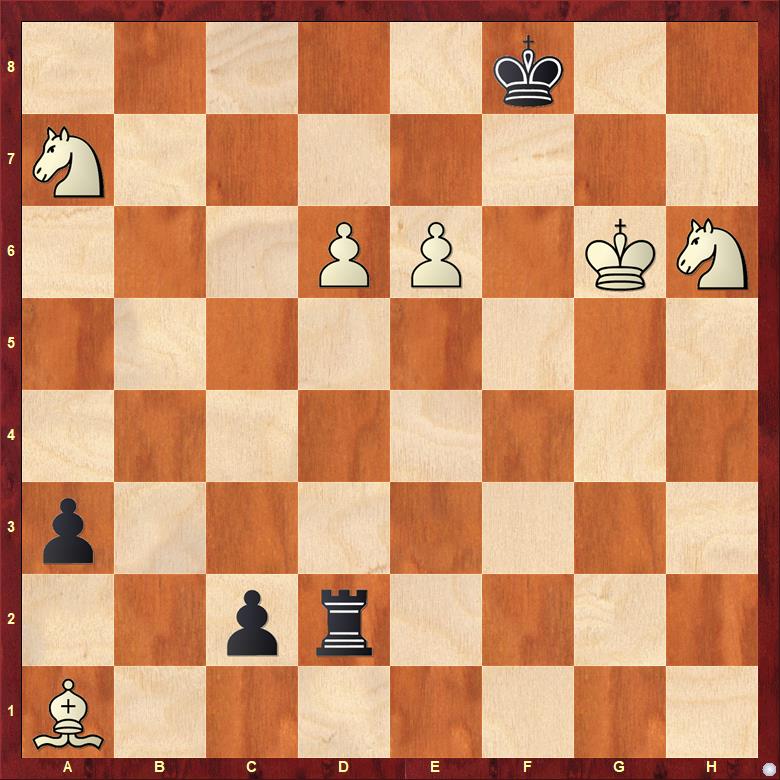
Solution: Although this lighter setup has no visual resemblance to the position from the Gunina-Hoang game, it is another example of the same theme, but here the pieces transit across d6 instead of e6. 1.e7+ Ke8 2.Nb5 Rxd6+, 2.Nb5 threatened 3.Nc7+ followed by e8=Q, therefore, 2...Rxd6+ is virtually forced. 3.Bf6! - but White doesn't capture the rook, a pawn is thus sacrificed on d6, and there's more to come! 3...Rd7 4.Nd6+!! a second offering on d6 4...Rxd6 5.Nf5 Rxf6+ 6.Kxf6 Kd7, and now, how does White win?
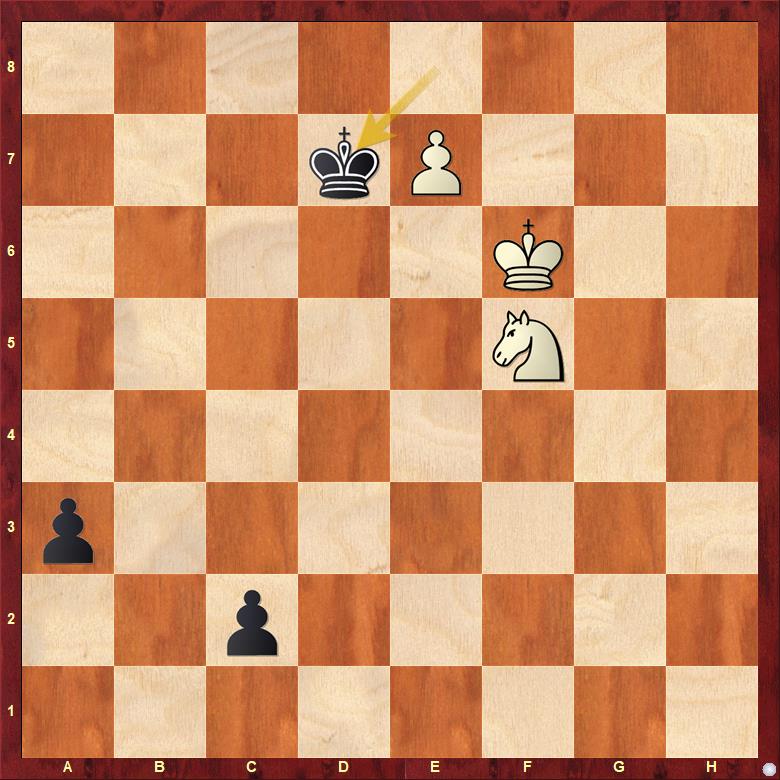
Yes, hope you found it, 7.Nd6!! - yet another sacrifice on d6 is the key. Finally, we have 7...c1=Q 8.e8=Q+ Kxd6 9.Qd8+ Kc6 10.Qc8+, and a happy skewer on the c-file wins the game for White. A fine rendition of the idea in a pleasantly natural setting!

Marjan Kovacevic is arguably Serbia's most iconic problemist and one of the few in the world to hold the Grandmaster title in both solving and composing! Since its inception in 1977, Marjan is likely the only person to have participated in every edition of the World Chess Solving Championship—a feat that reflects his enormous passion for chess composition. Marjan was awarded the Grandmaster title in solving in 1988 and in composing much later in 2007. A journalist by profession, he is also an excellent writer and interviewer and has, among other things, co-authored 2345 Schachprobleme – Anthology of Chess Combinations with the legendary Milan Velimirović. However, lately, he seems to have directed his energies more towards mentoring up-and-coming solvers and composers.
From Canada and born in 2006, Ben Smolkin is one of Marjan's online students. He was featured in Gady Costeff's concise but informative piece on ChessBase, namely Emil and the Detectives. The prize-winning study of his presented there is attached below. Make sure to play through it—we think it bespeaks his talent. Ben, moreover, also runs a YouTube Channel where he explains general games and puzzles along with compositions of his own and others on a regular basis.
The seventh and final study of this article also by a prominent Serbian problemist. This study is based on a rook-pawn ending played very recently between Jan Krzysztof Duda and Alexandar Indjic at the 44th Chess Olympiad in Chennai.
Study 07
Branislav Djurasevic
Chess Artistry Adventure, Global Chess Festival, 2022
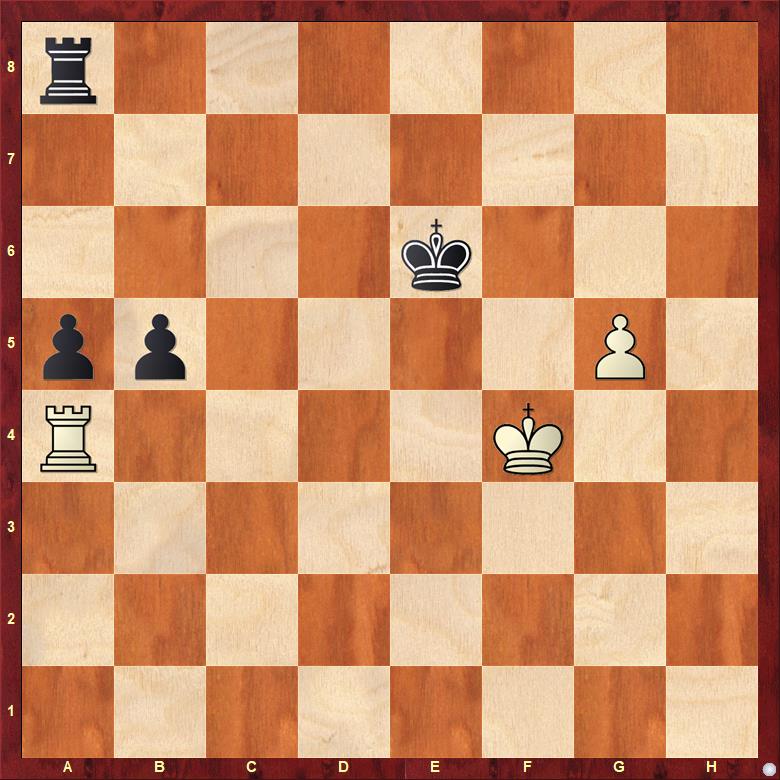
Solution: No doubt, this is a toughie. Black is clearly in the driver's seat and to defend this position, White has to be ultra-accurate. 1.Ra1! a4 and now, already on the second move, White has a critical decision to make. The general drawing plan should involve getting the king to queenside on time, so presumably this next move would be with the king, but to which square?
(Aside: 1.Re4+, looks natural and perhaps would be most player's first choice, but it loses to 1...Kd7. The problem is now the king can't be moved readily towards the queenside as 2.Ke3 or Ke5 runs into 2...Re8. In other words, the rook is misplaced on e4, and White has to spend a couple extra tempi on it before he can move his king!)
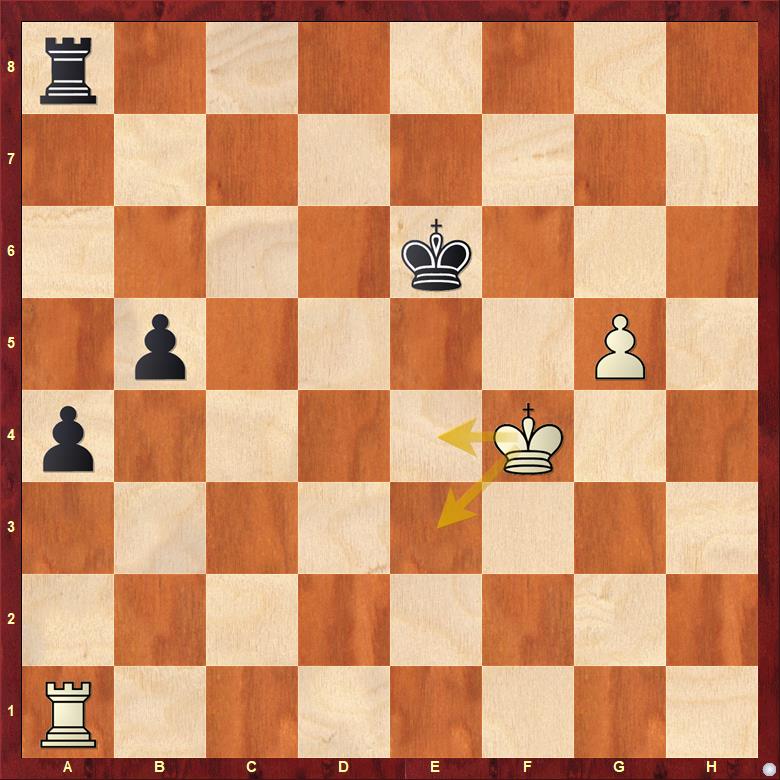
2.Ke4, it turns out, allows Black an extra tempo, which makes all the difference: 2...Rg8 4.Rg1 b4 5.Kd3 Rc8 6.Rg4 Rd8+ 7.Kc2 b3+, the pawn push comes with a check, and now 8.Kb2 Rd2+ 9.Kc3 Rc2+ 10.Kd3 Rc1 0-1
The right choice, therefore, is 2.Ke3!! - this avoids the check with the pawn push, and White doesn't lose any time. 2...Rg8 3.Rg1 b4 4.Kd2 Rc8 5.Rg4 Rb8 6.Kc1 and now 6...a3 7.Kb1 b3 8.Ra4 draws. Replay the fully annotated study below:
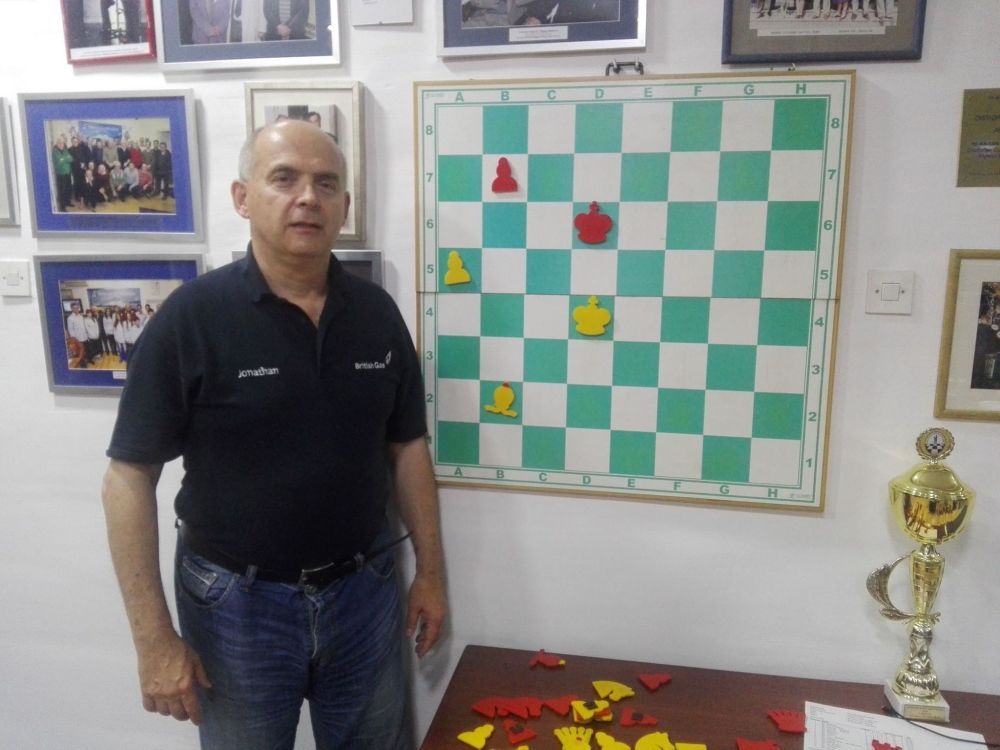
Branislav Djurasevic was born and brought up in Belgrade, Serbia. His father, Božidar Djurašević, was a strong over-the-board International Master who twice represented Yugoslavia at the chess olympiad. Naturally, therefore, Branislav took to chess early and grew up in a strong chess environment. Currently, he holds the title of FIDE Master in solving and has represented Yugoslavia in solving championships multiple times. In composing, he has interests both in problems and studies, and this year has fulfilled the criteria for the FIDE Master title. He is also the eponym and inventor of a theme called the "Djurasevic Cycle."
Coverage on ChessBase India YouTube - How did the chess players fair at solving these positions?
Important Links
Chess Artistry Adventure Part I
Chess Artistry Adventure Part II






